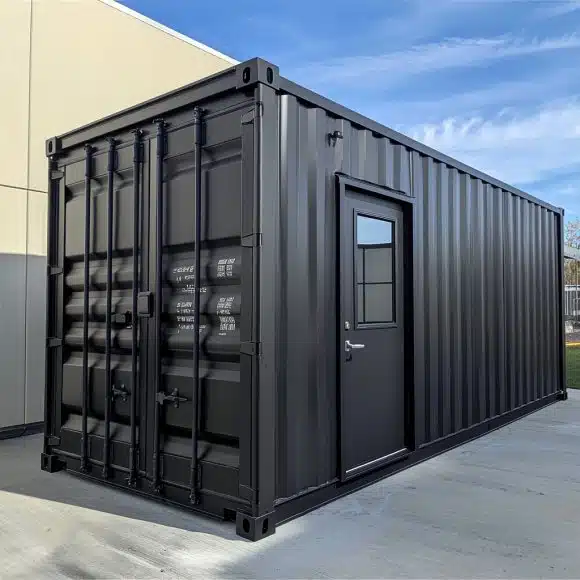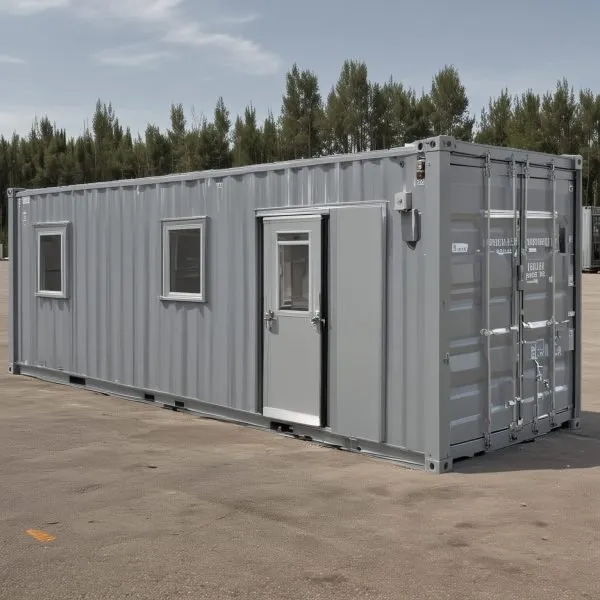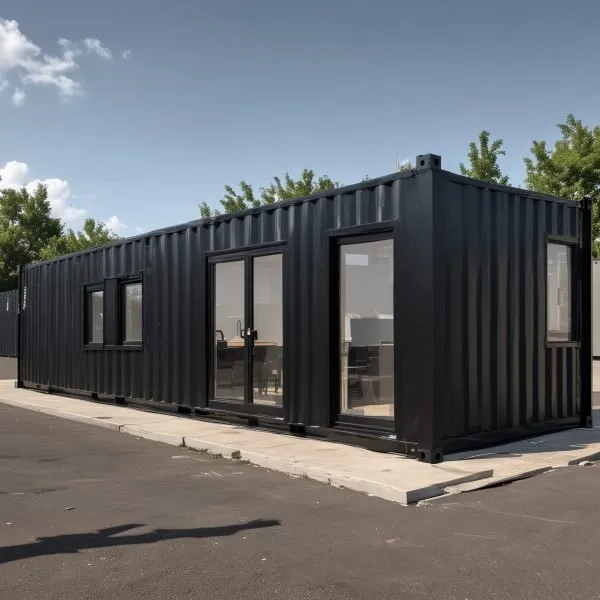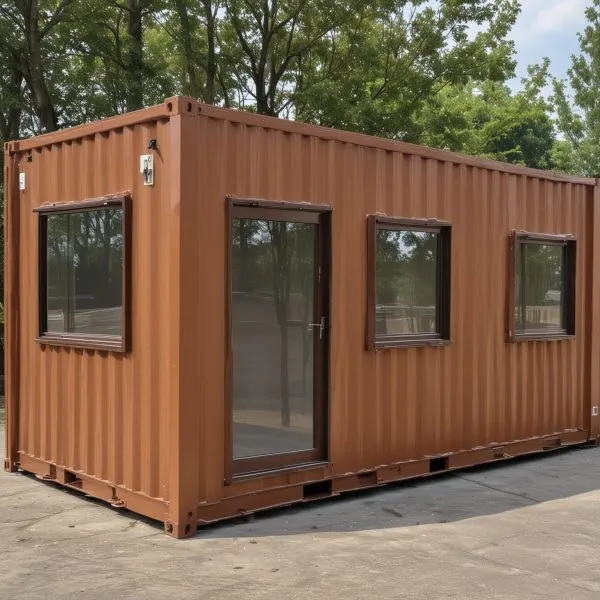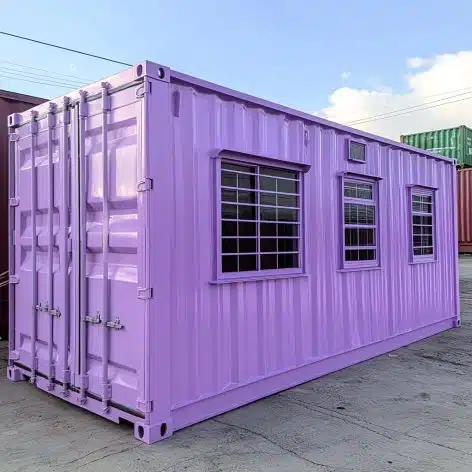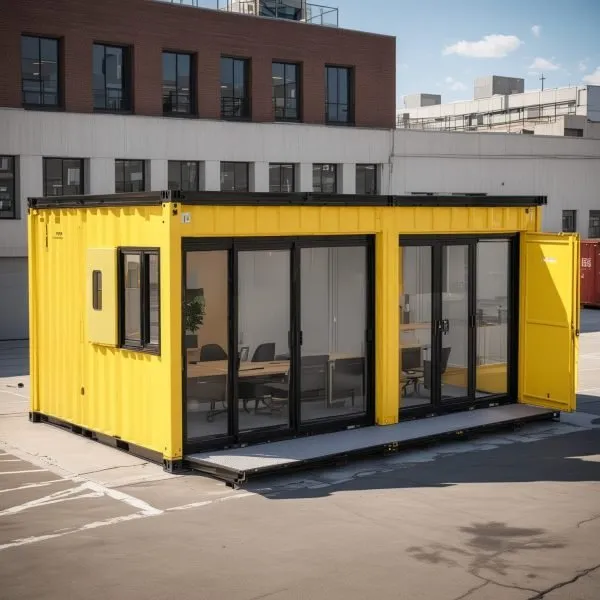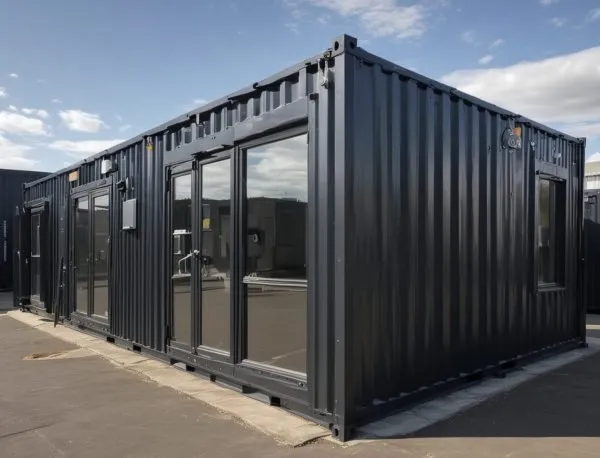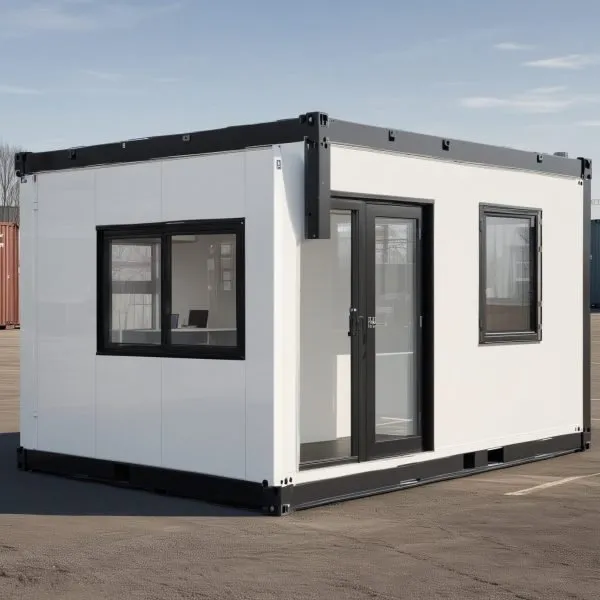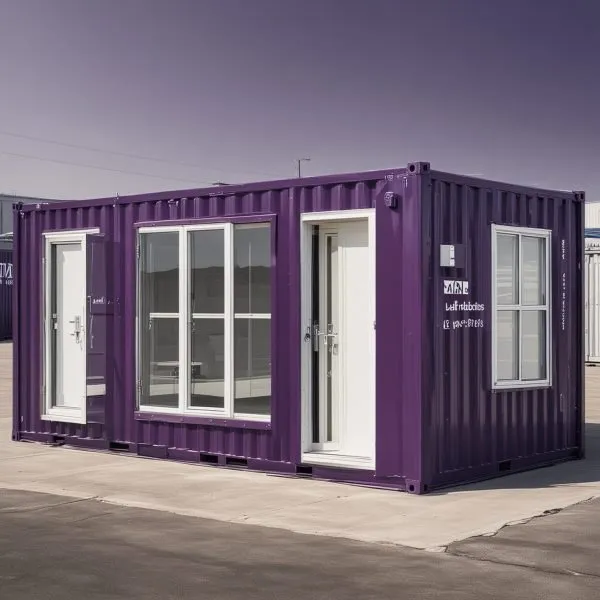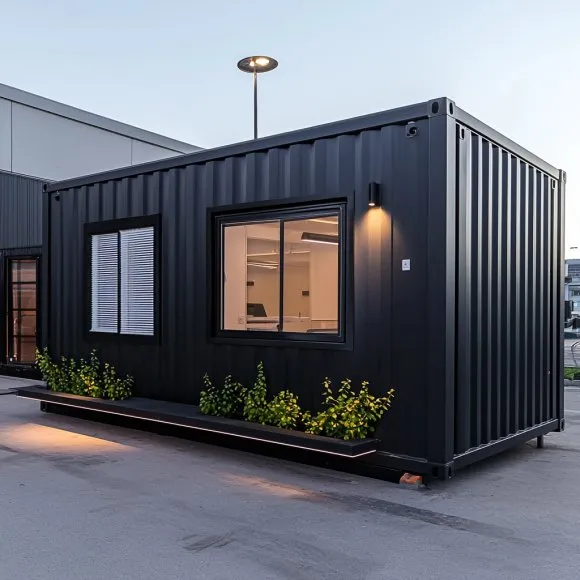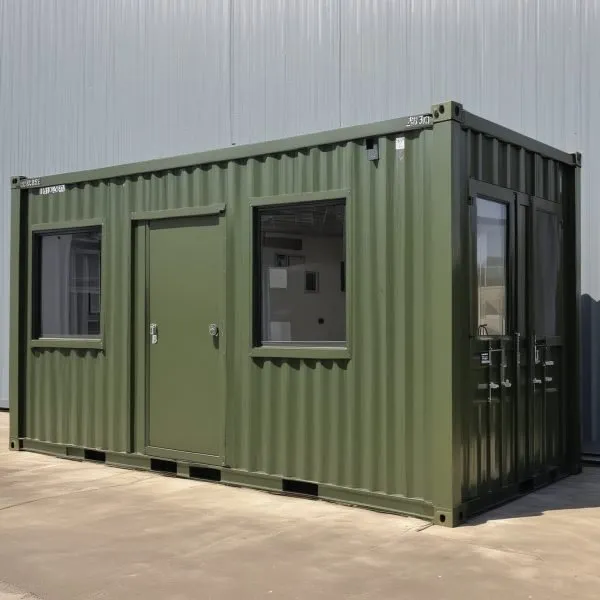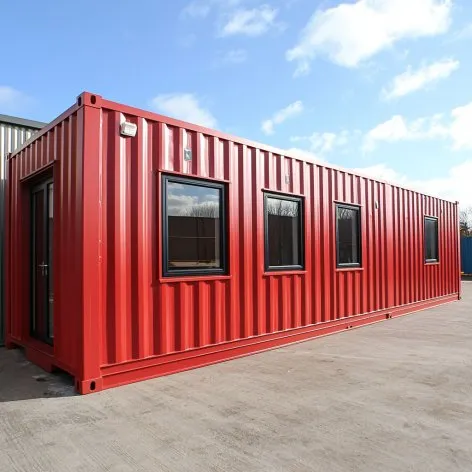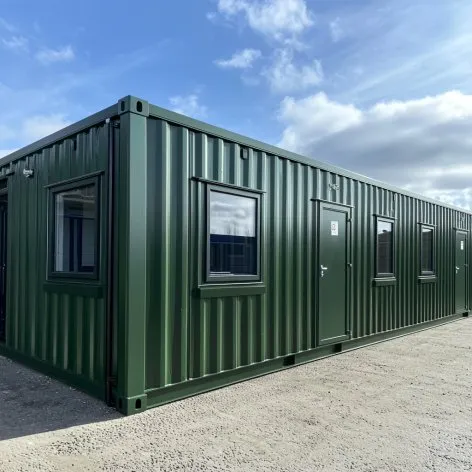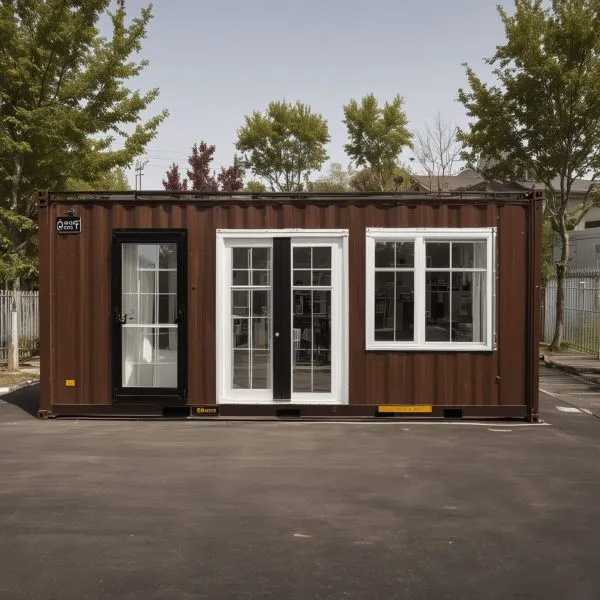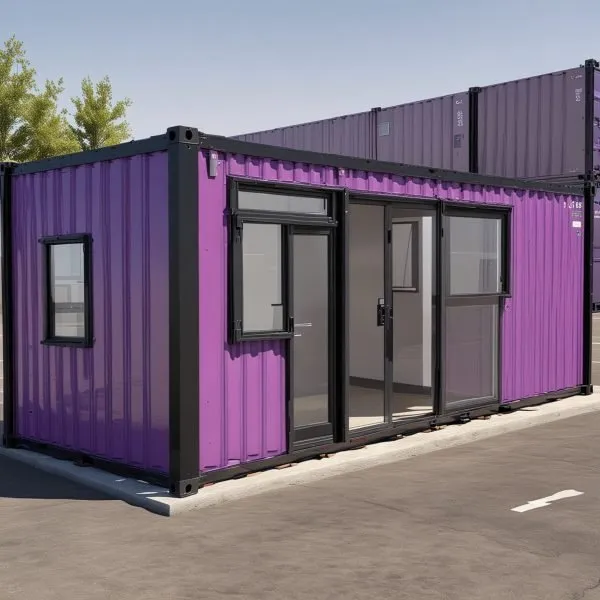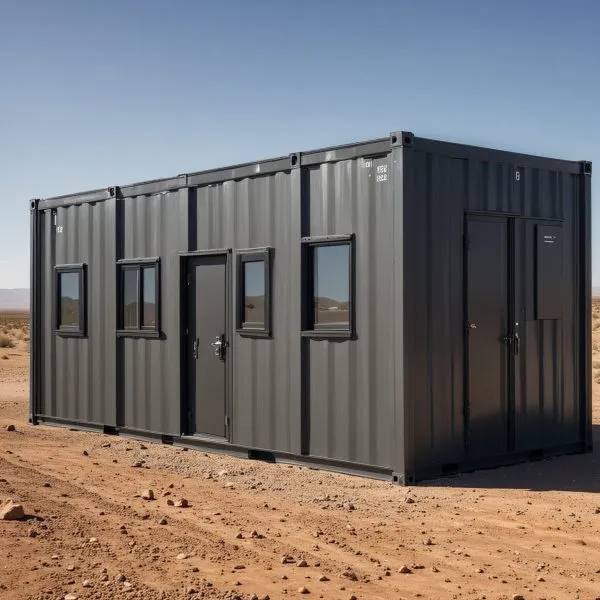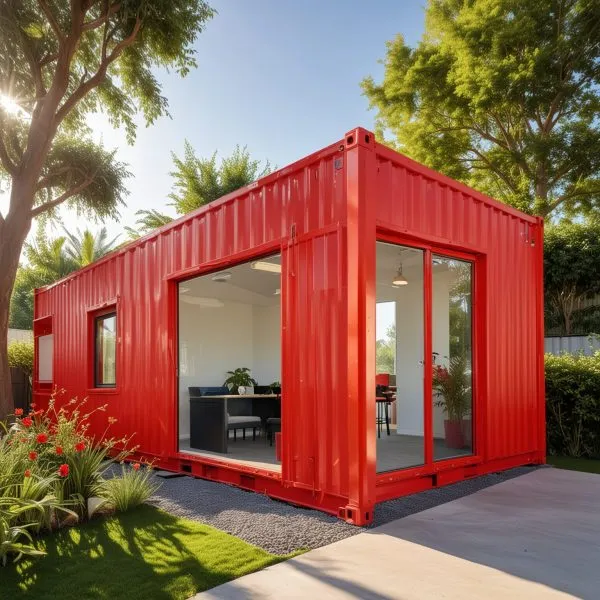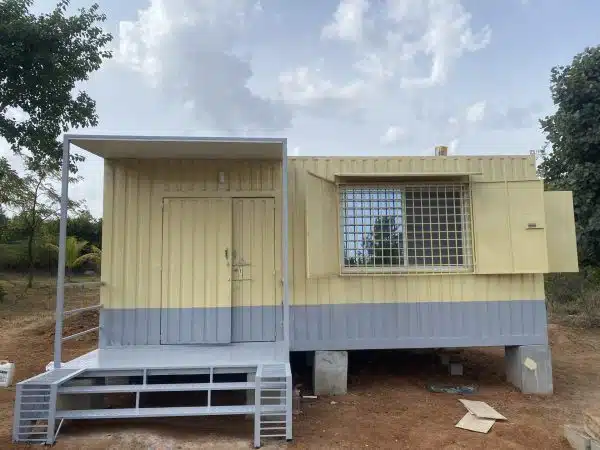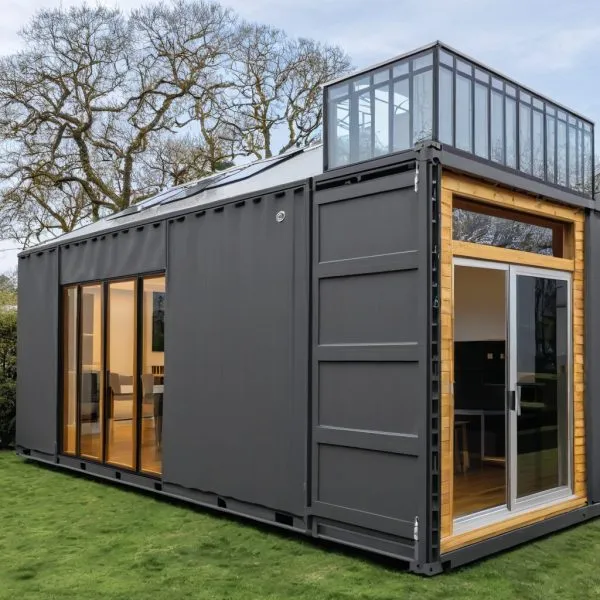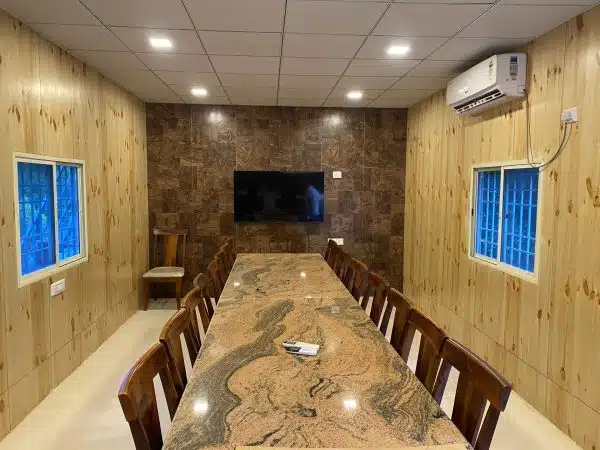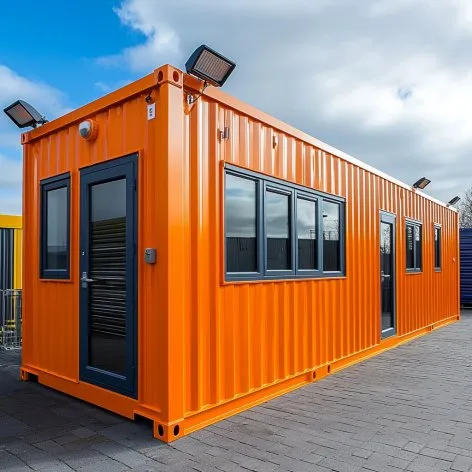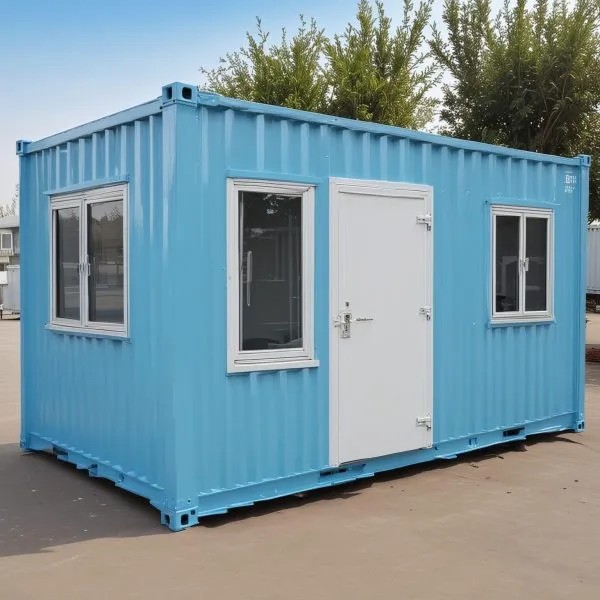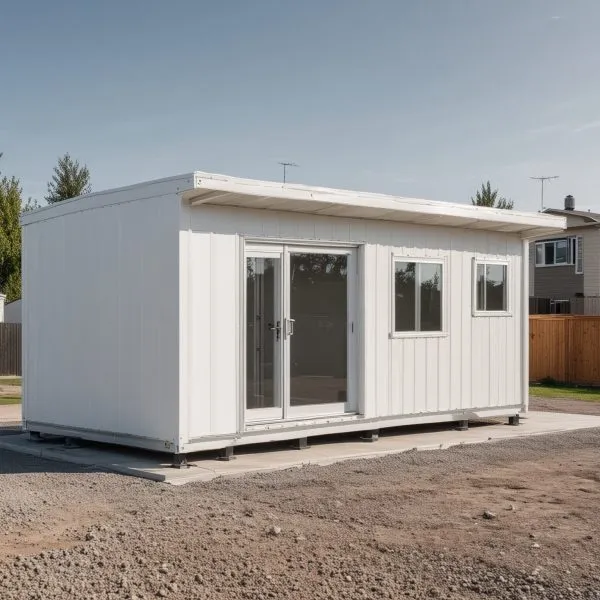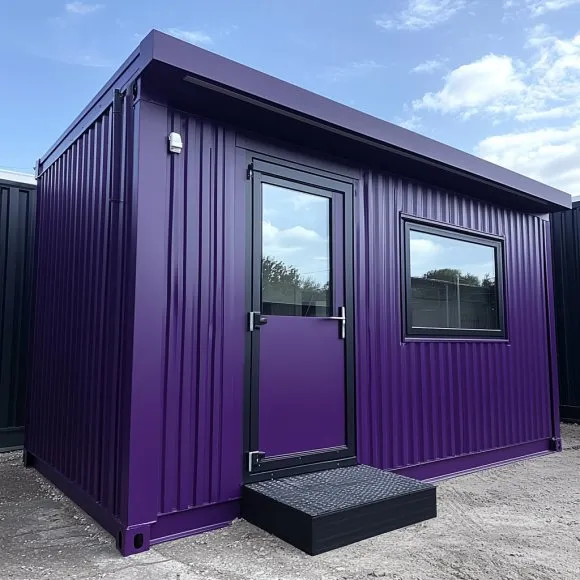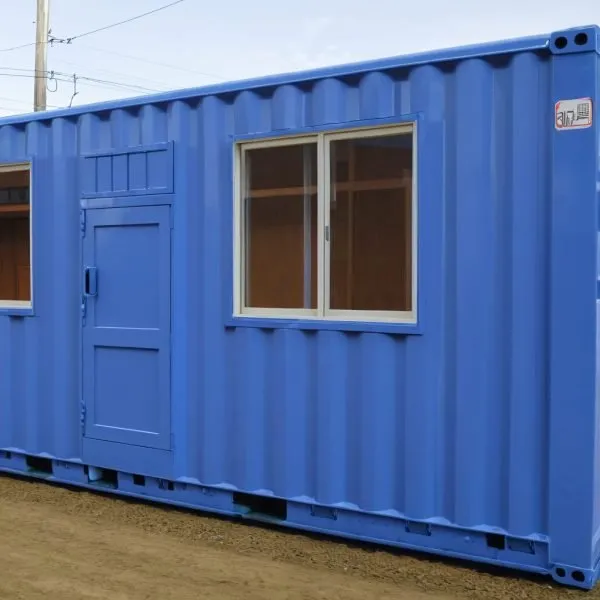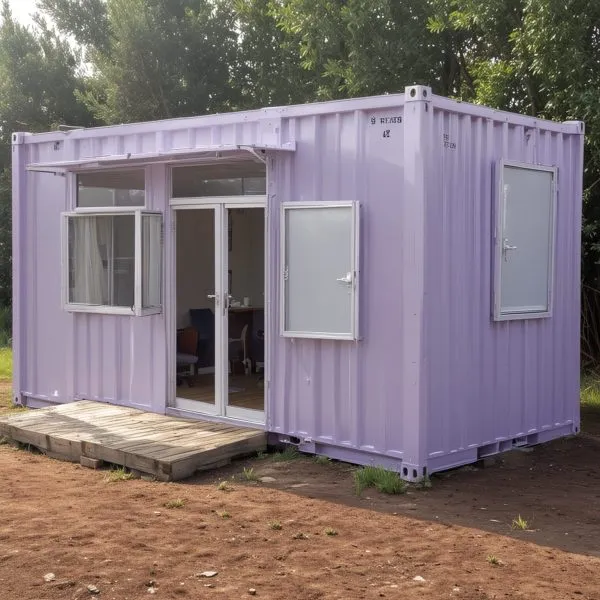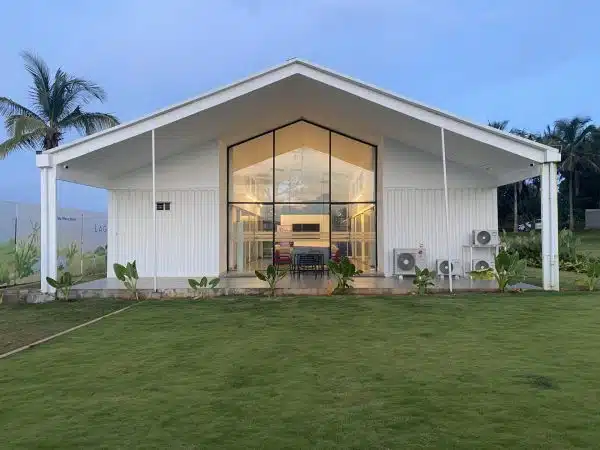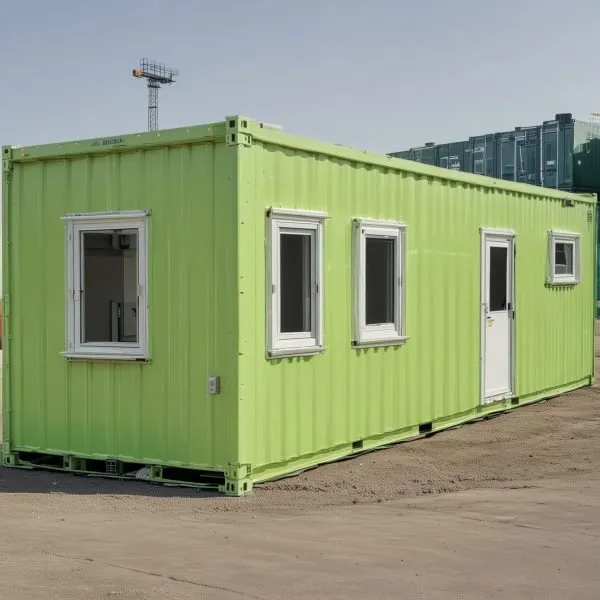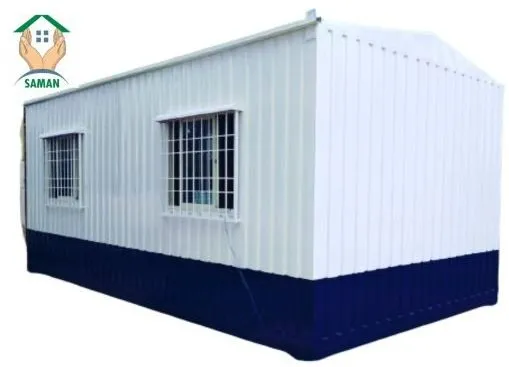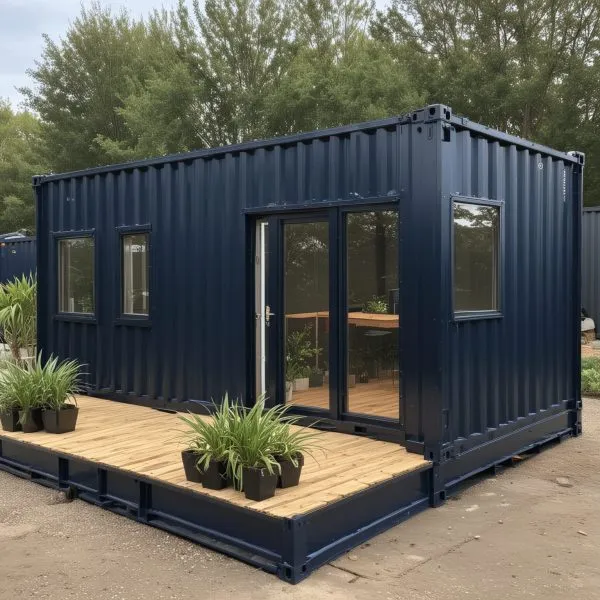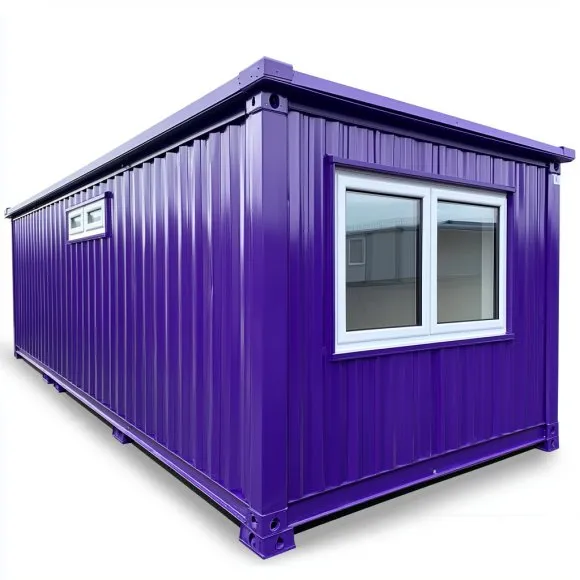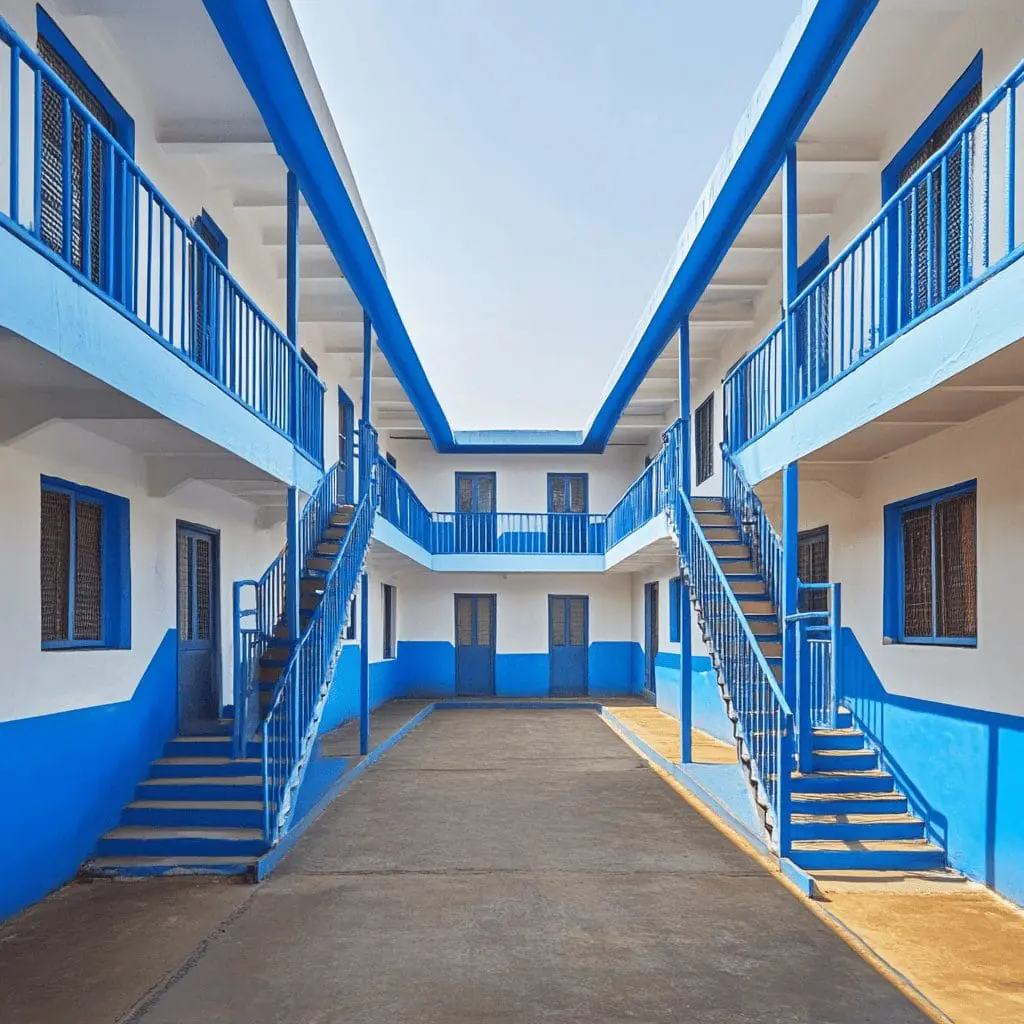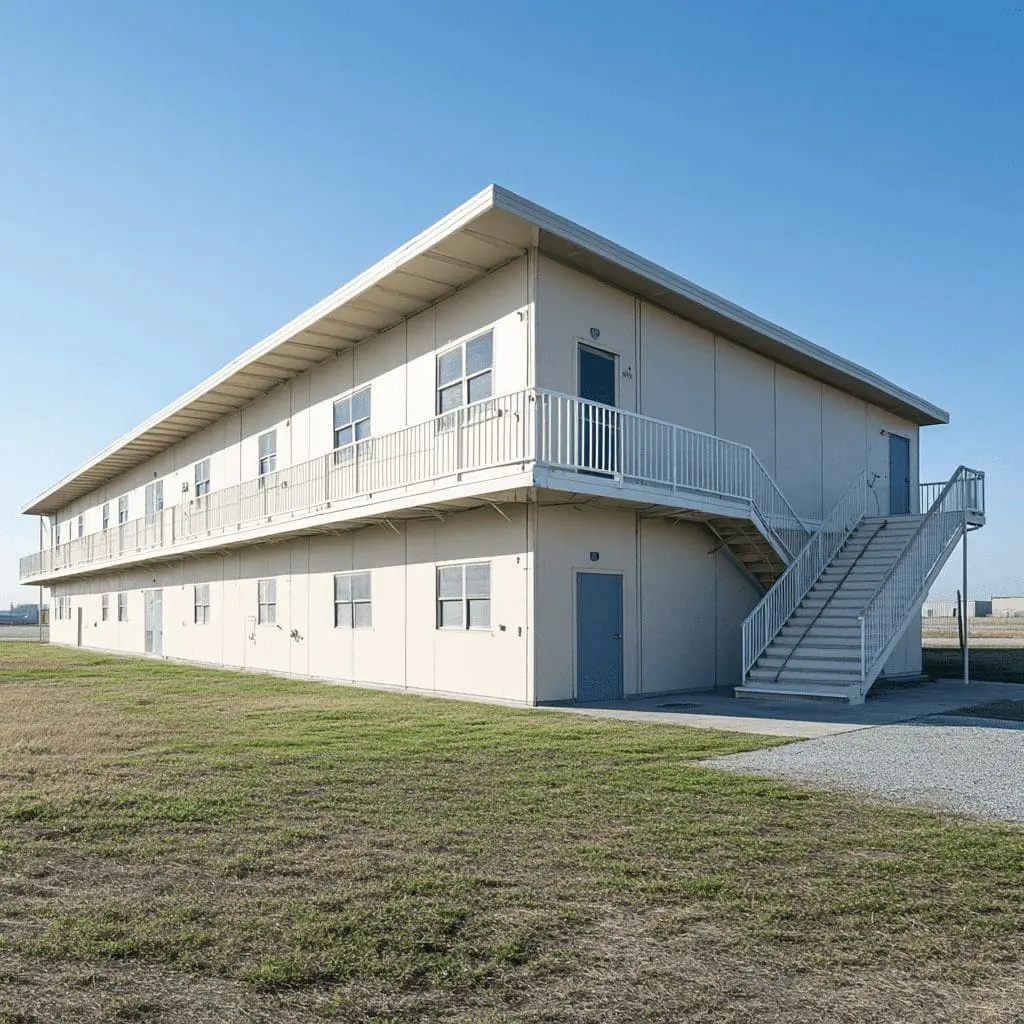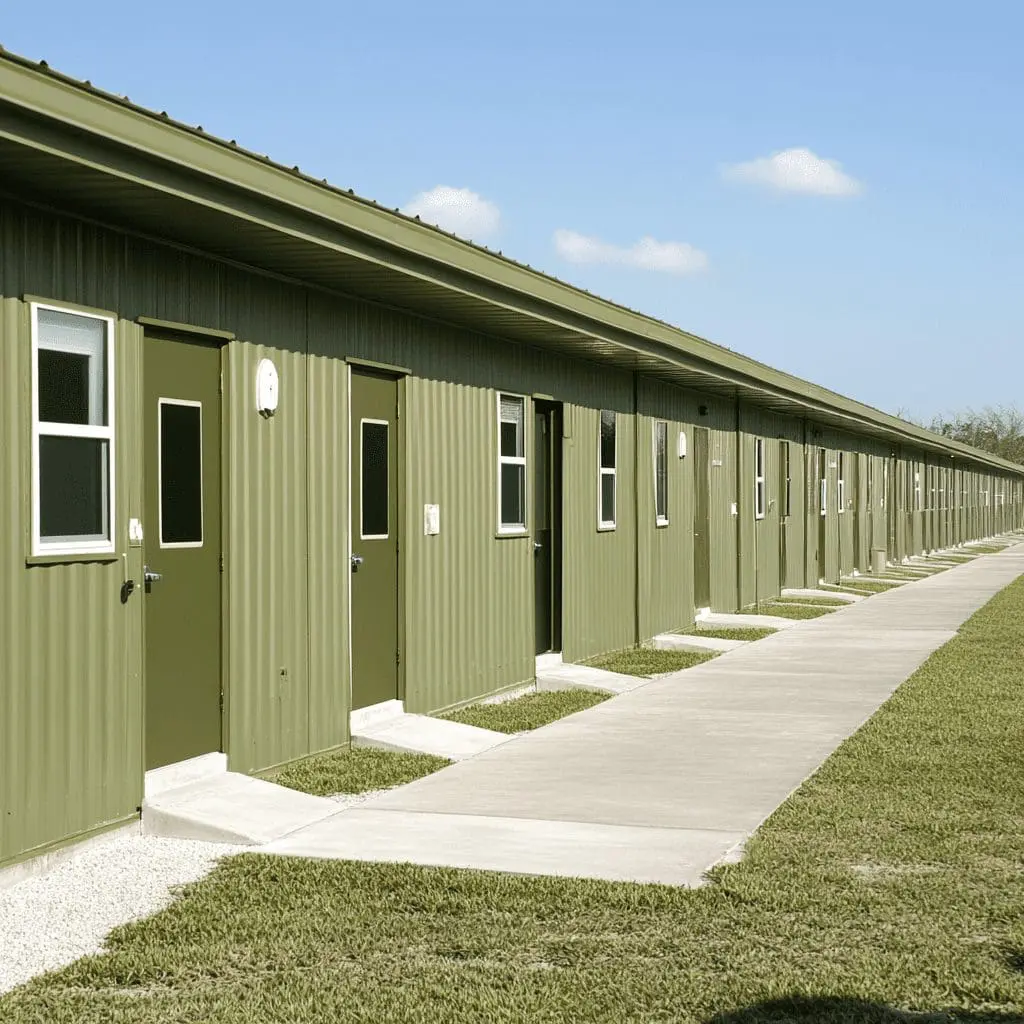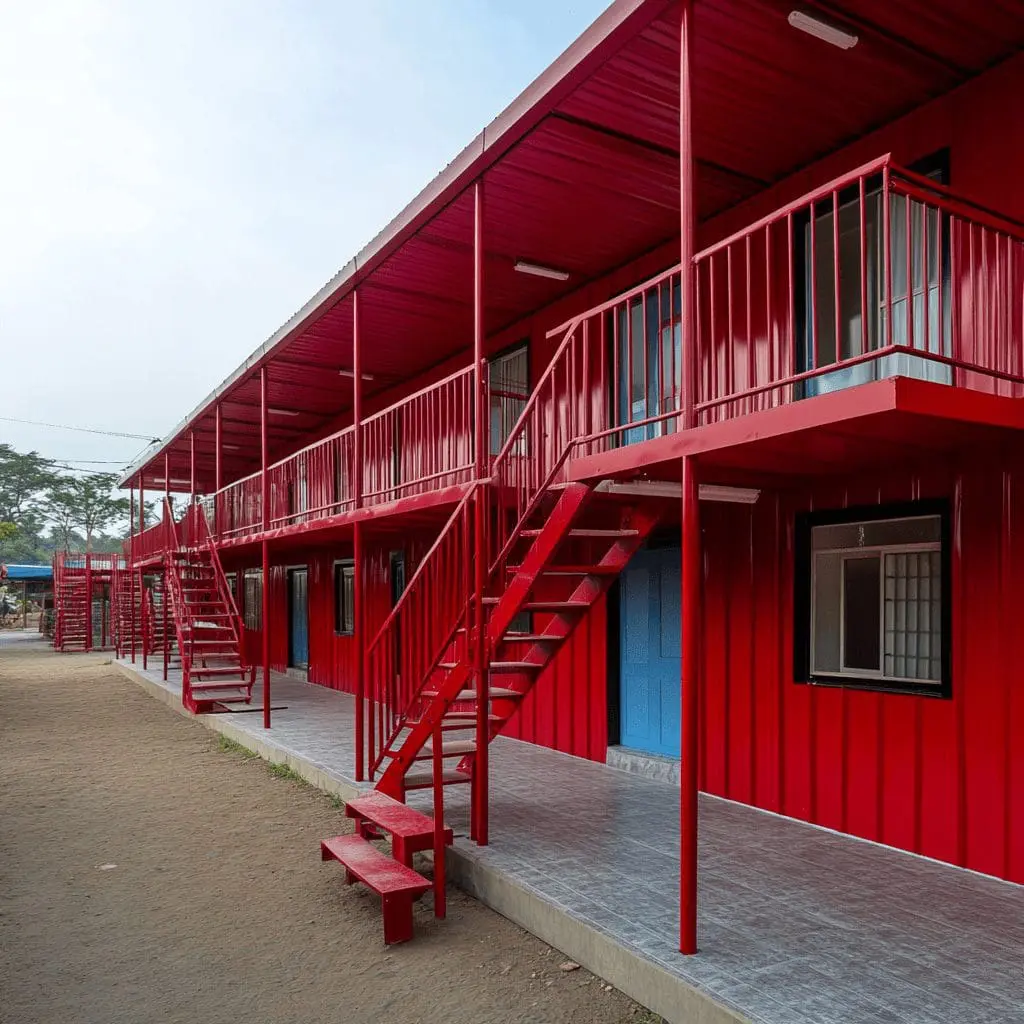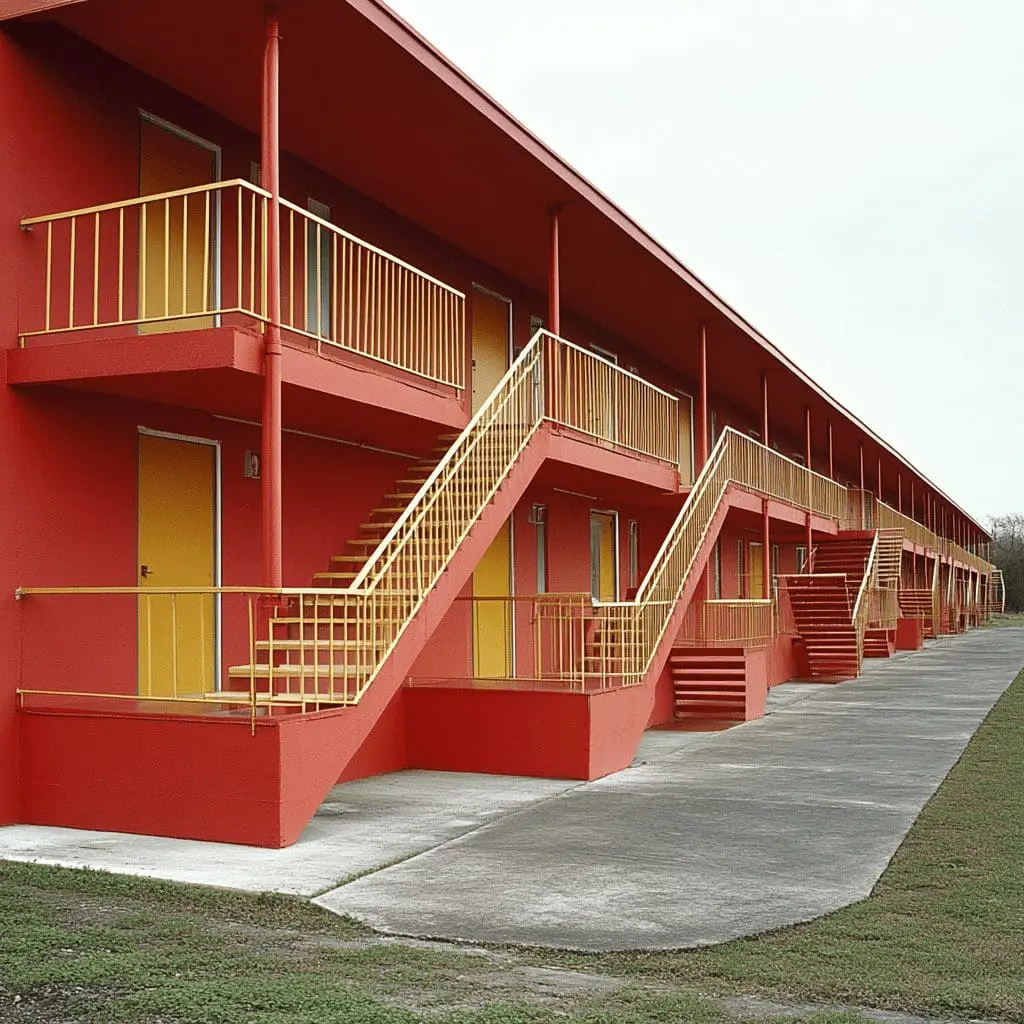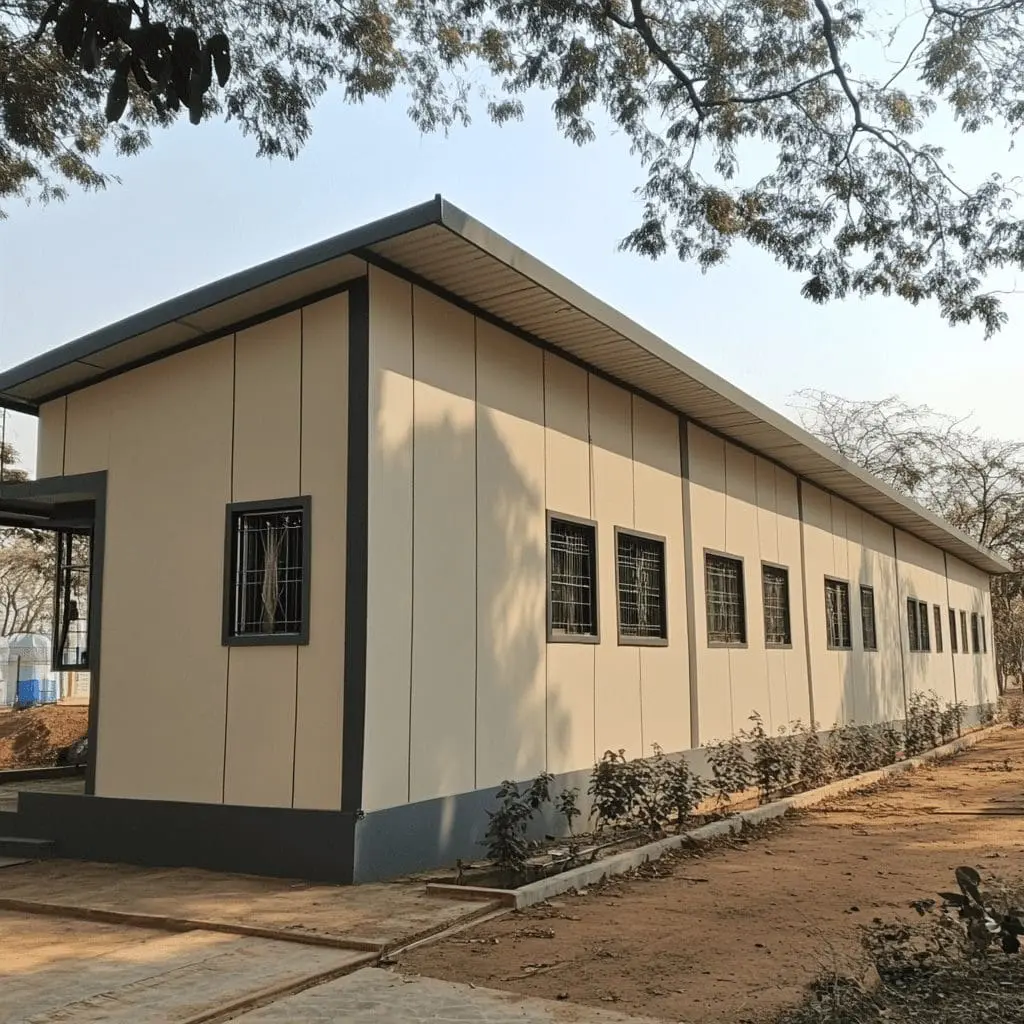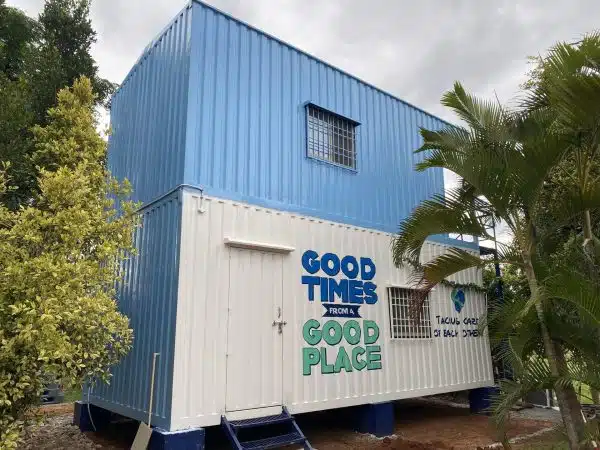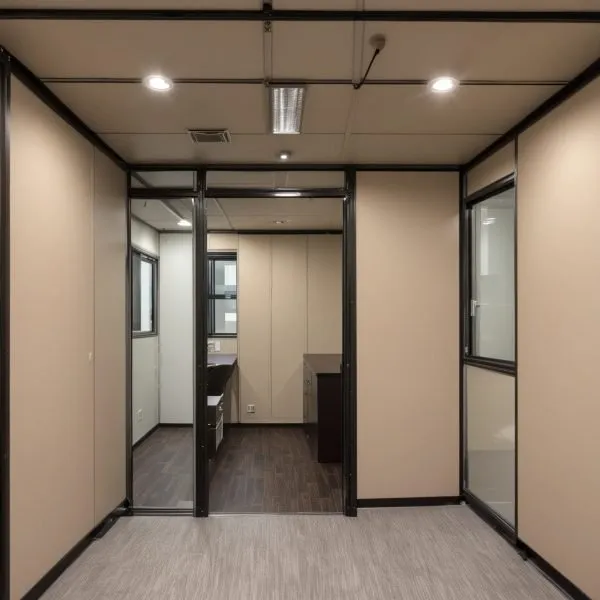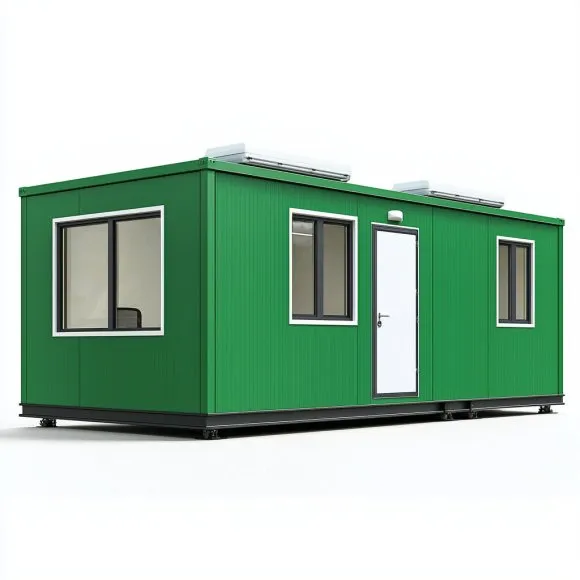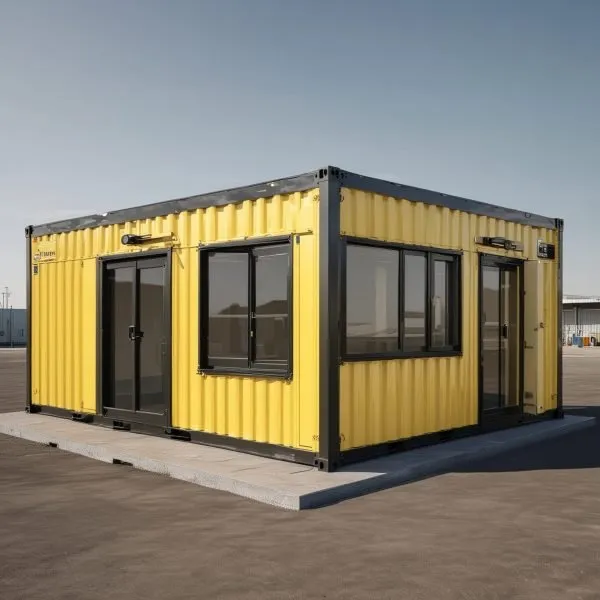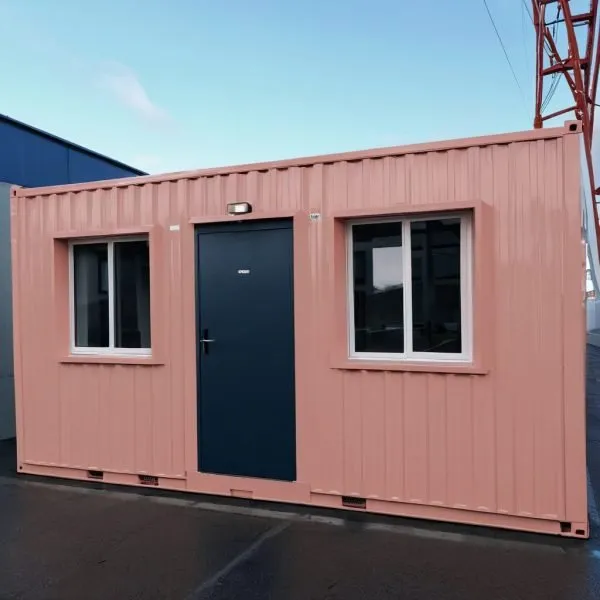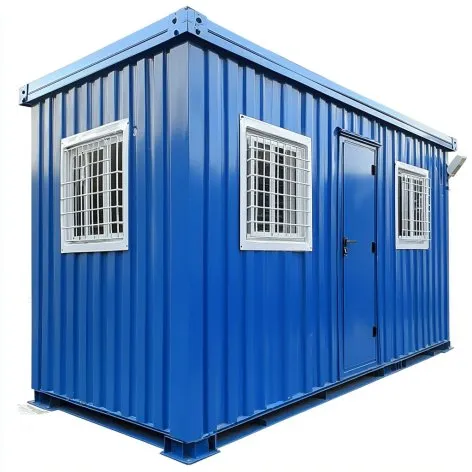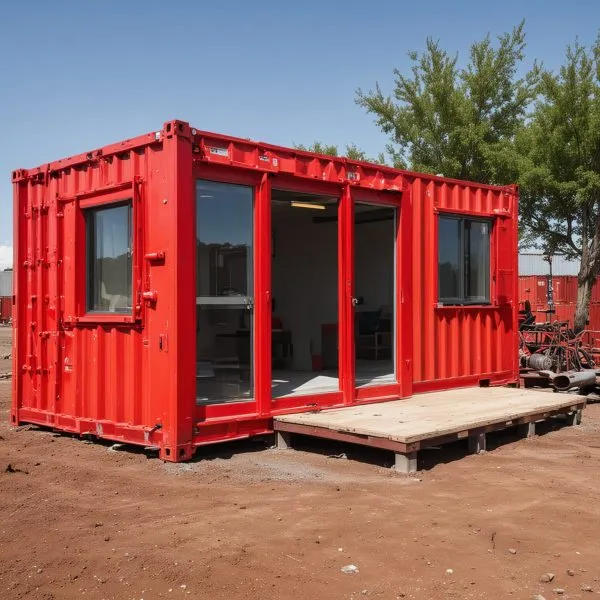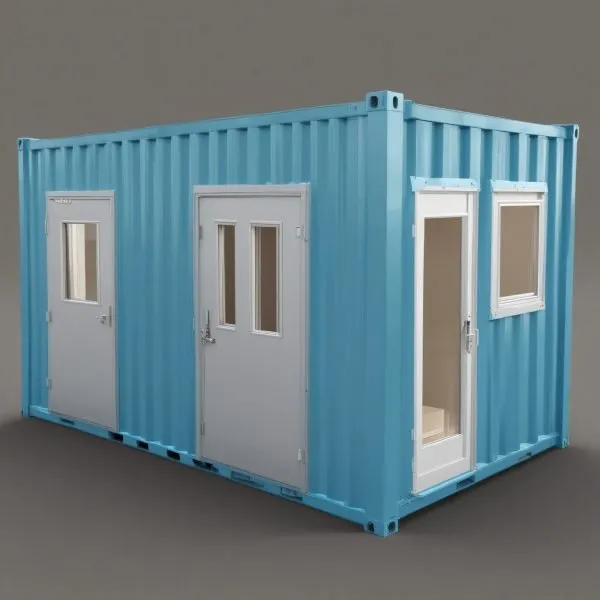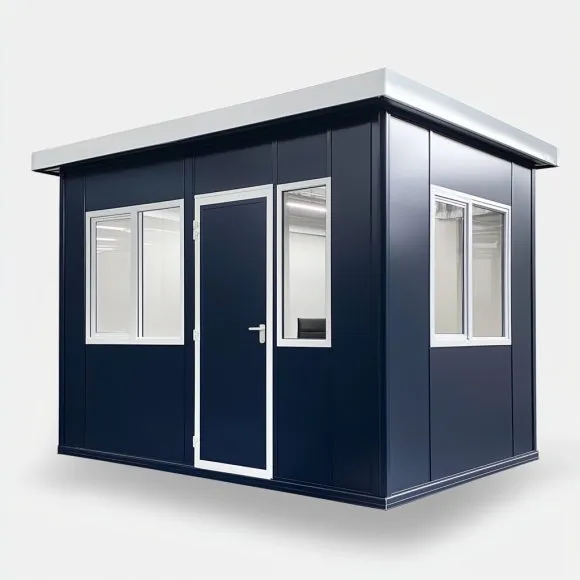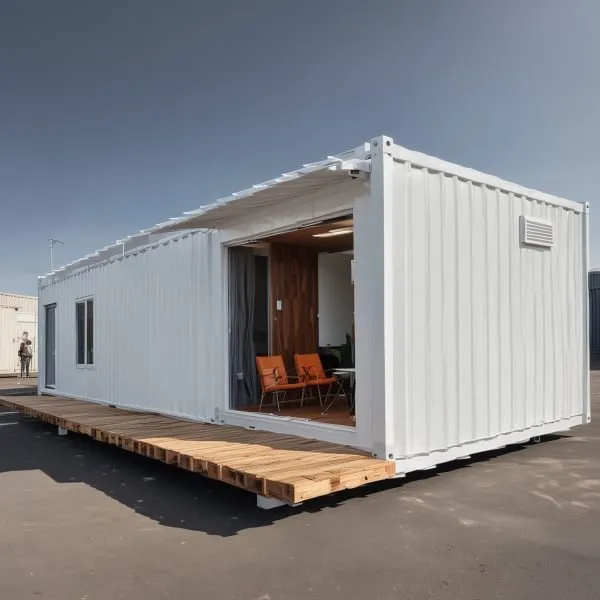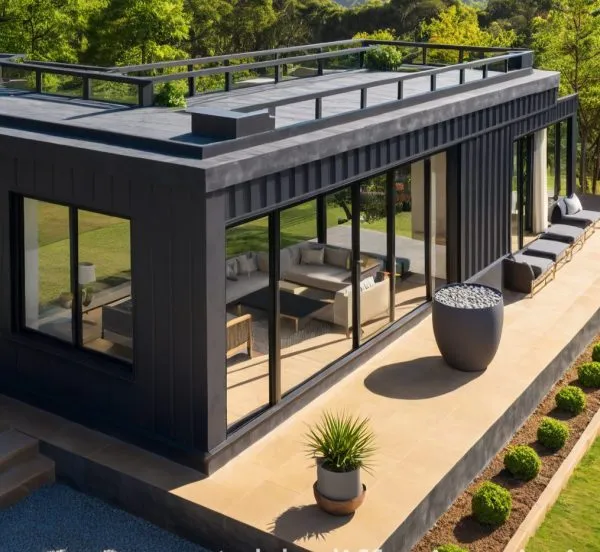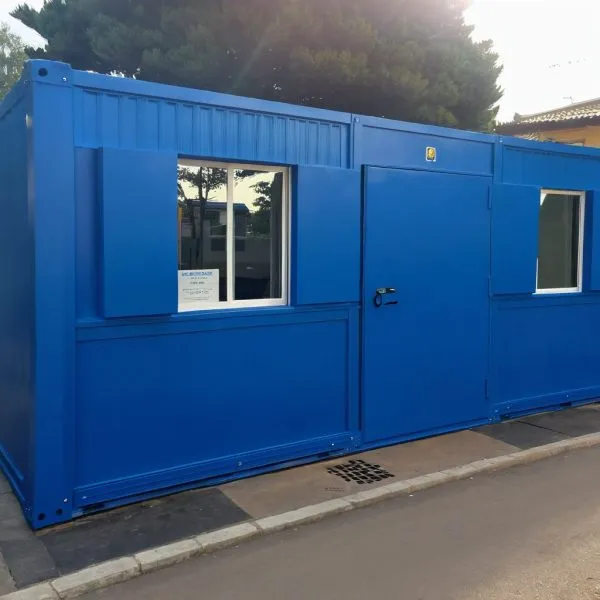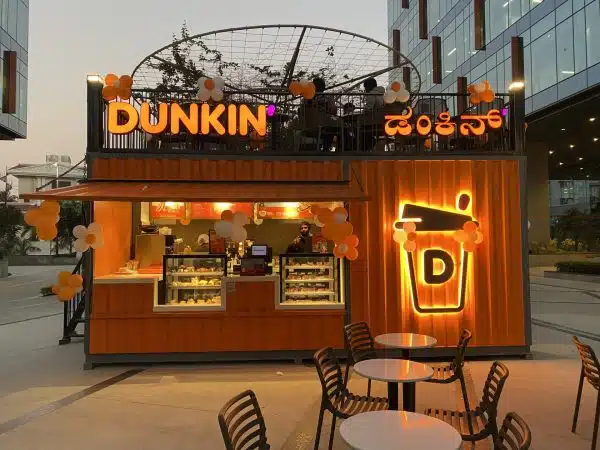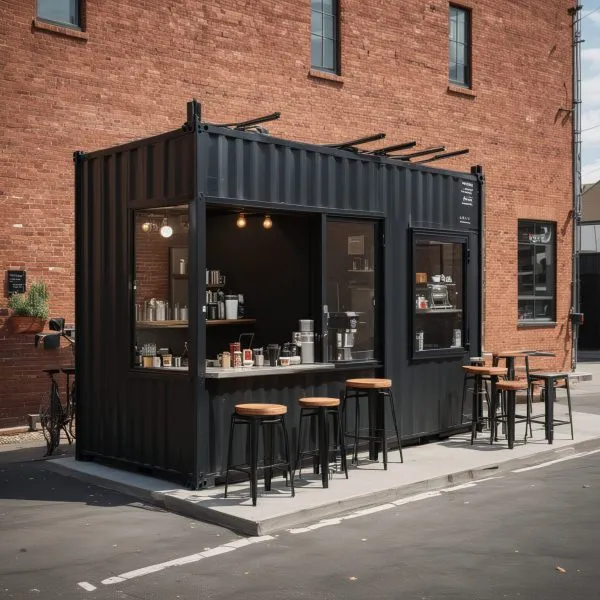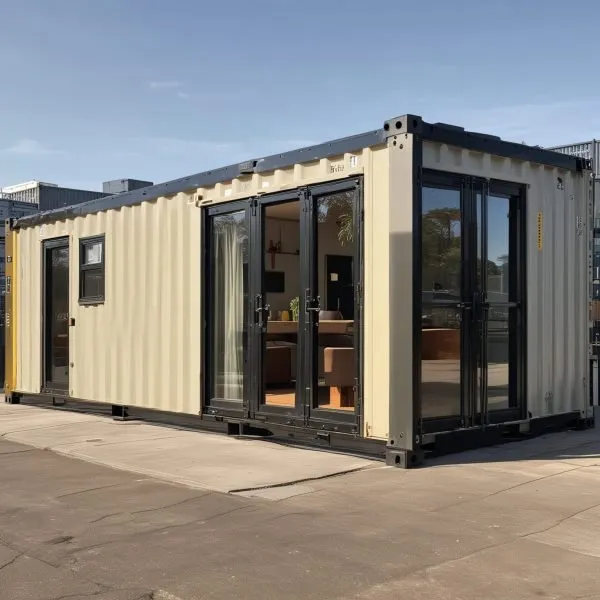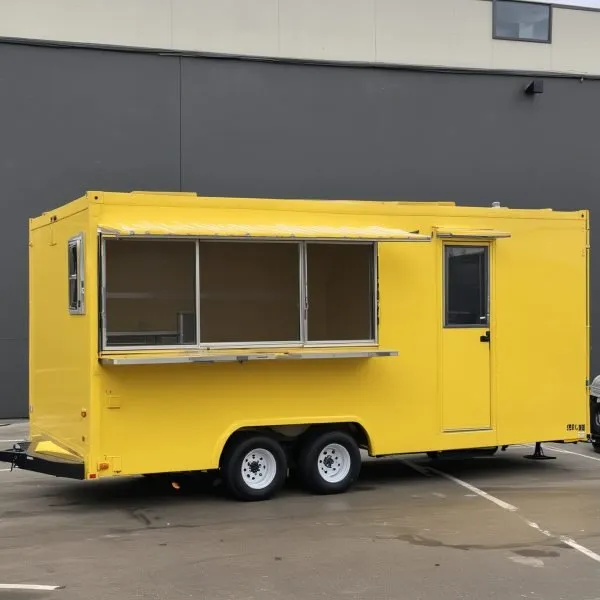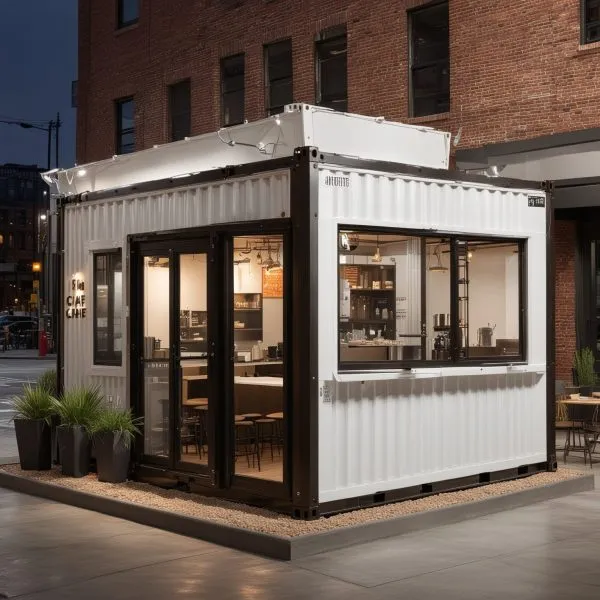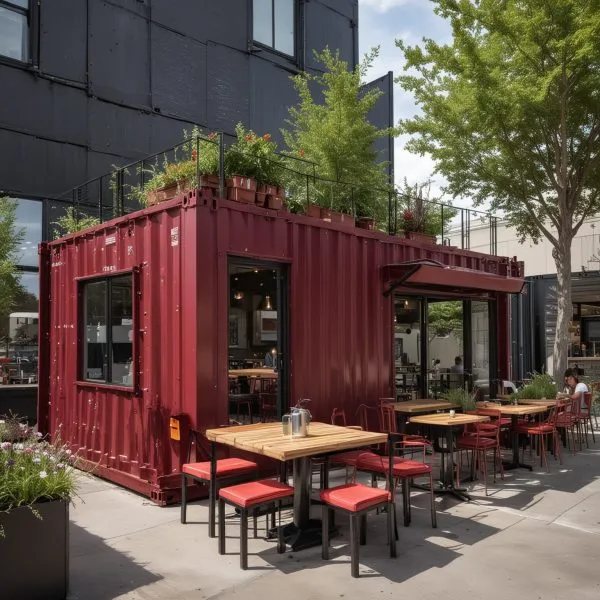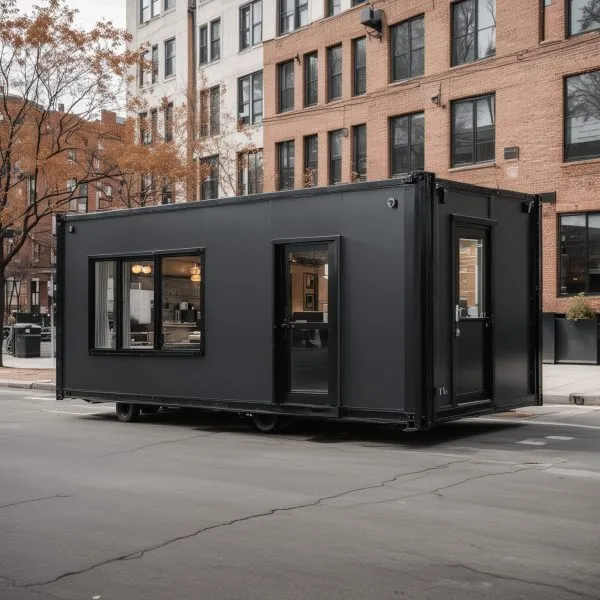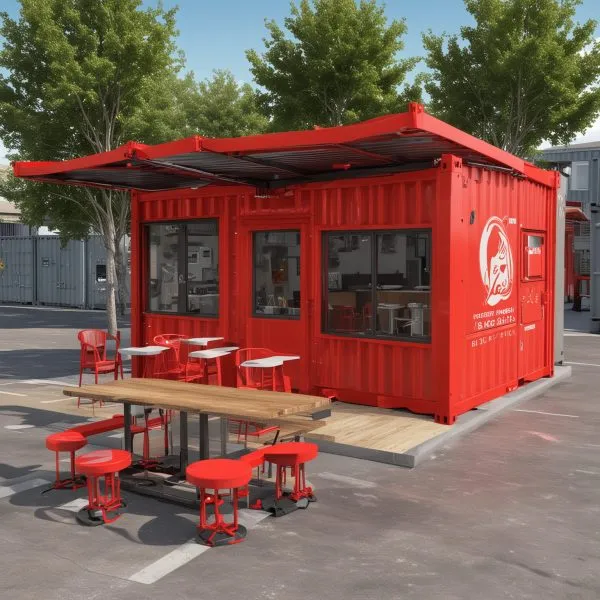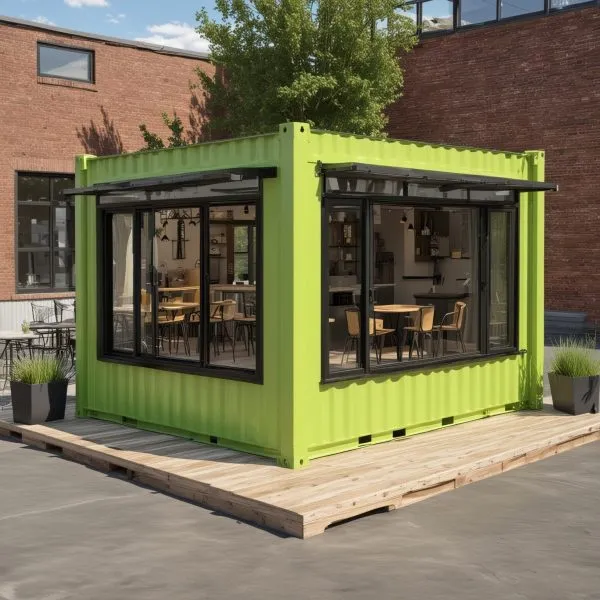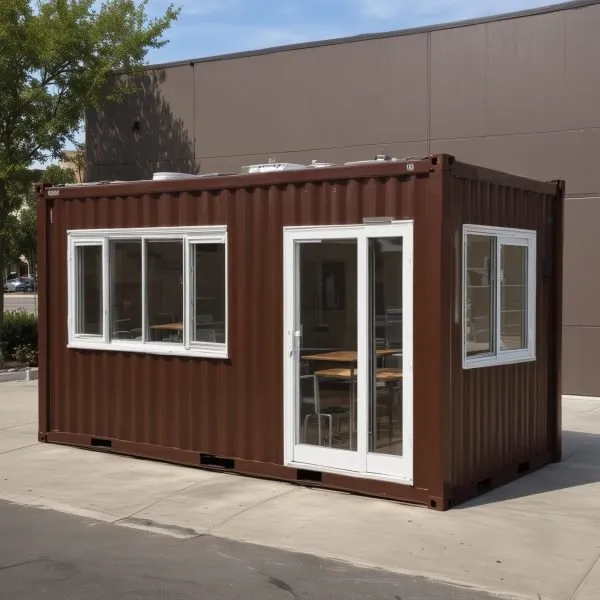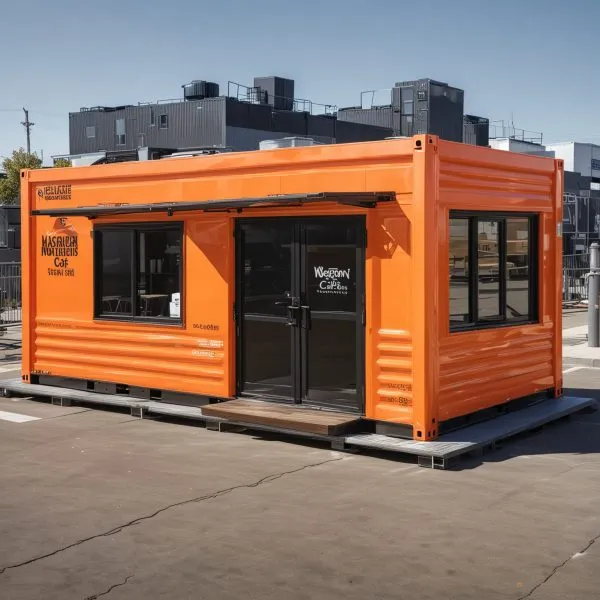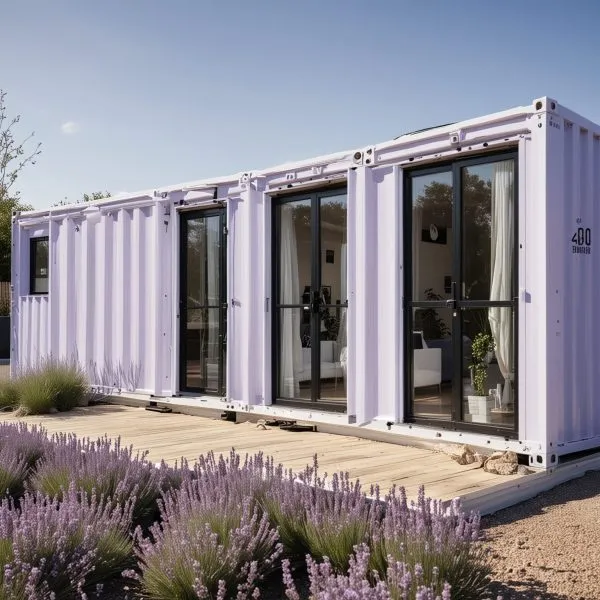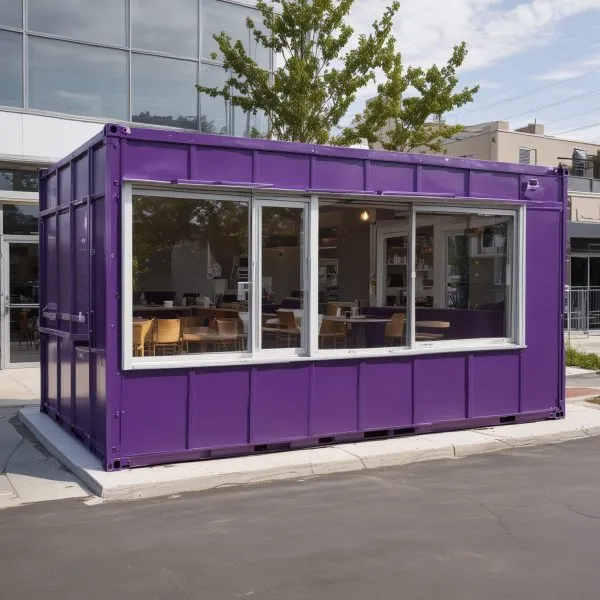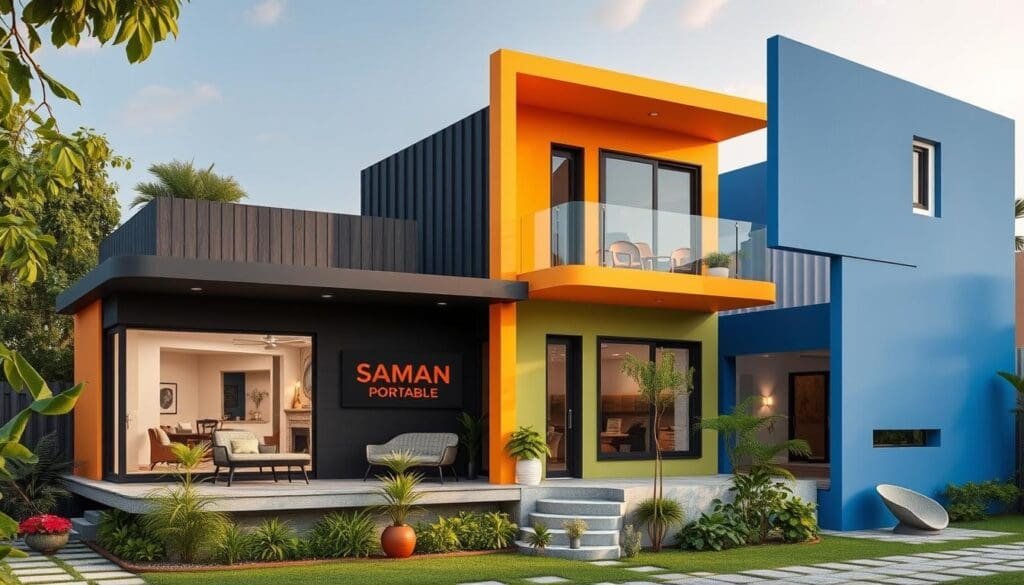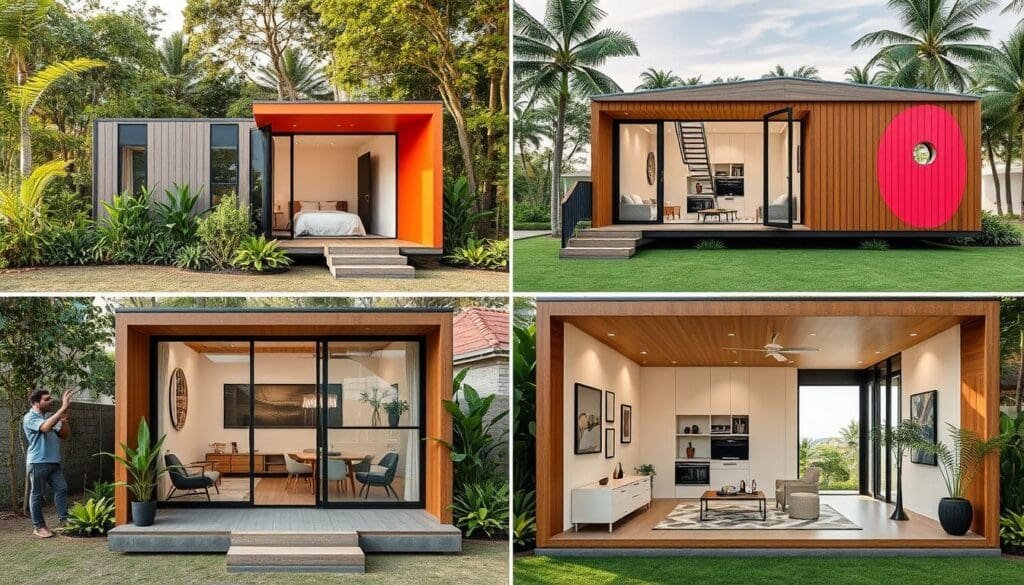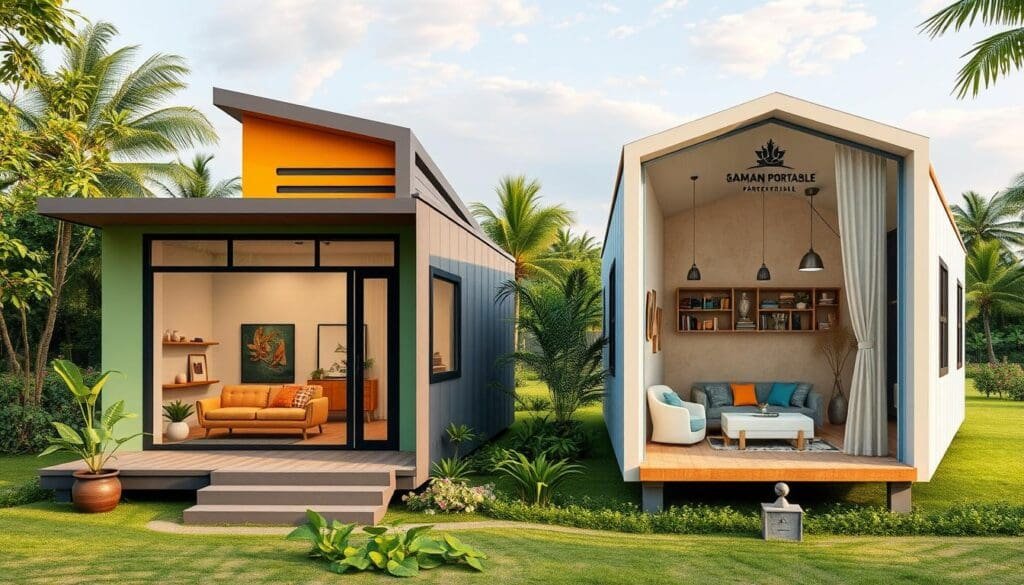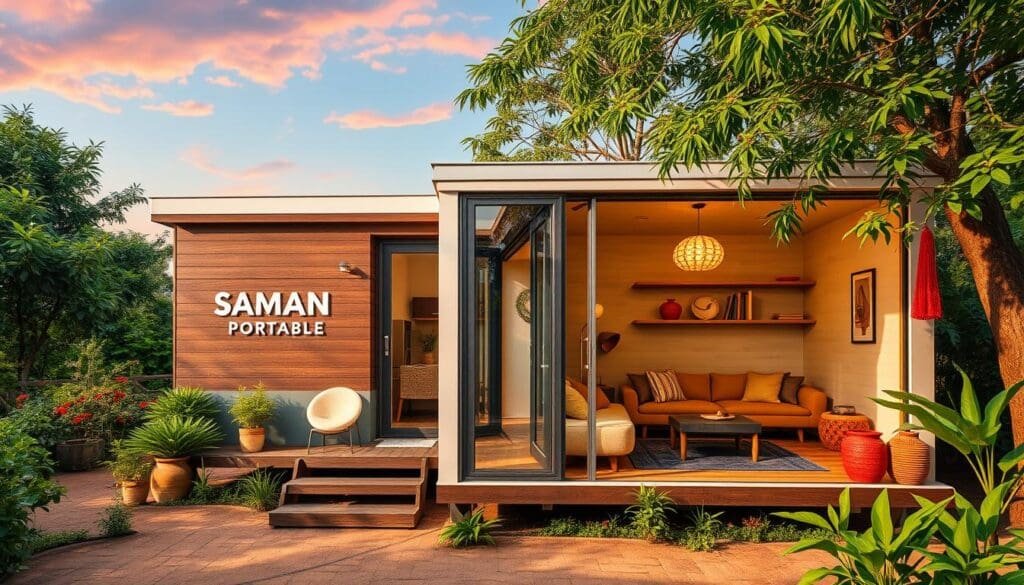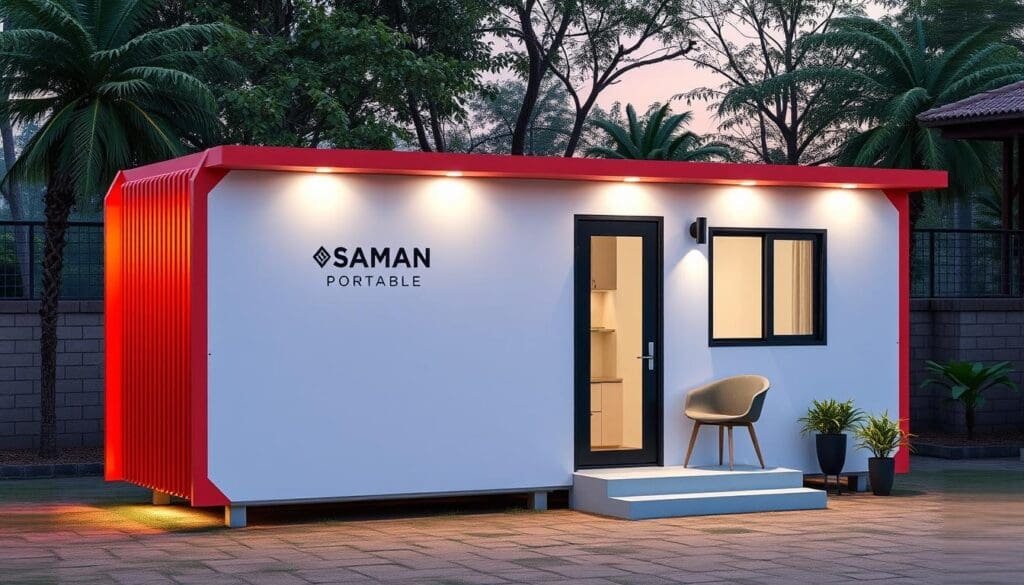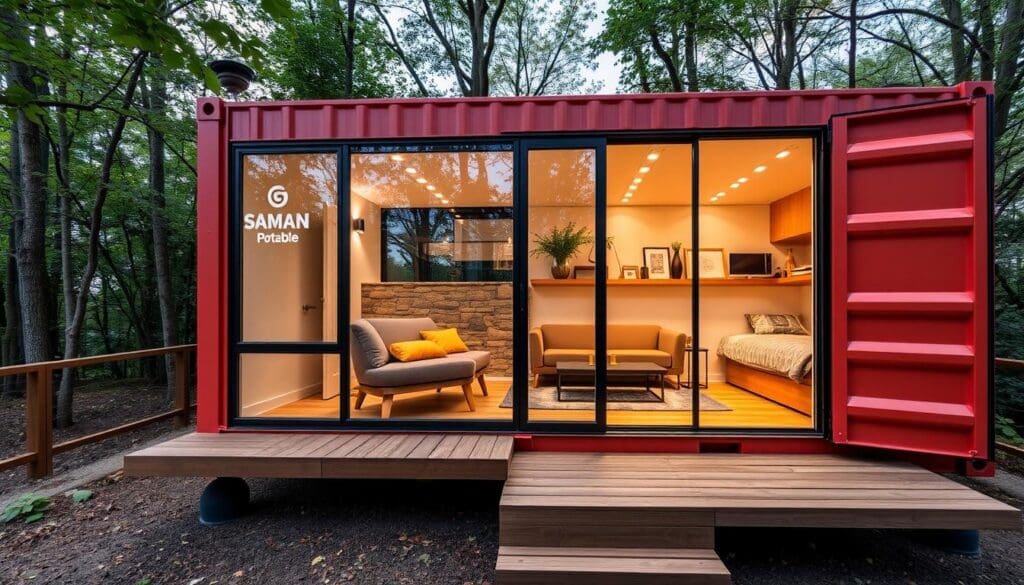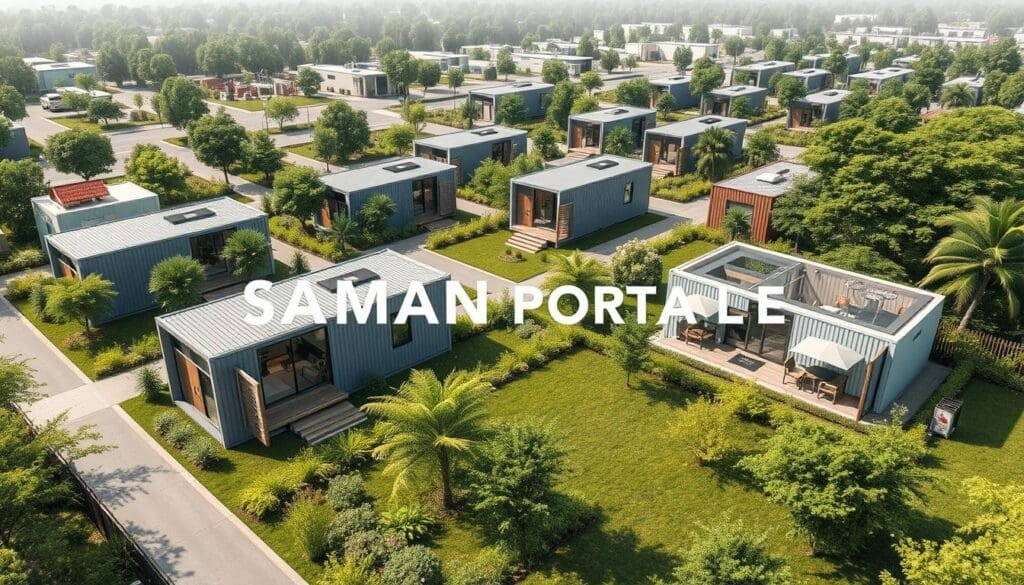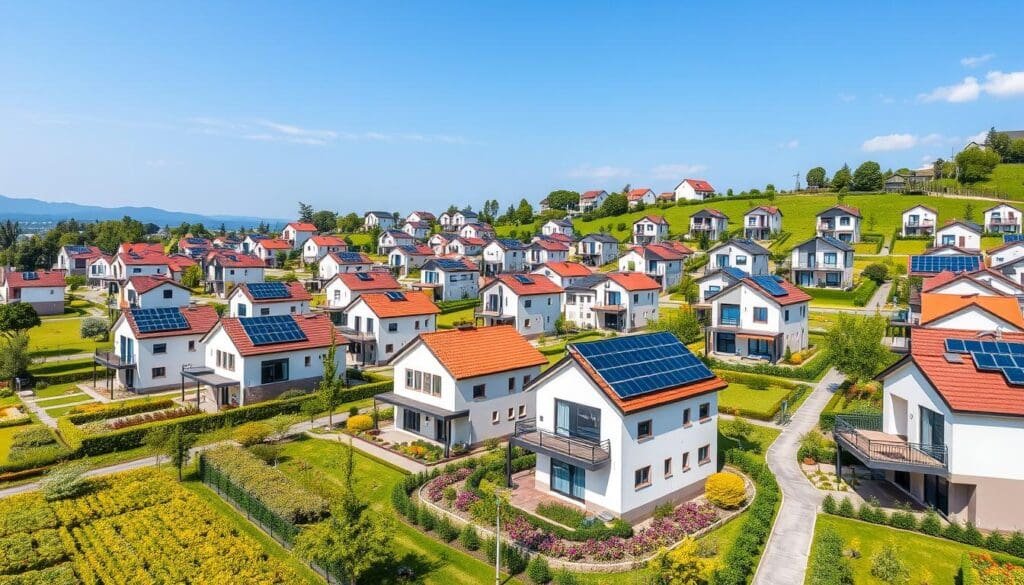Explore the Best Modern Prefab Homes: Affordable, Stylish, and Eco-Friendly Living
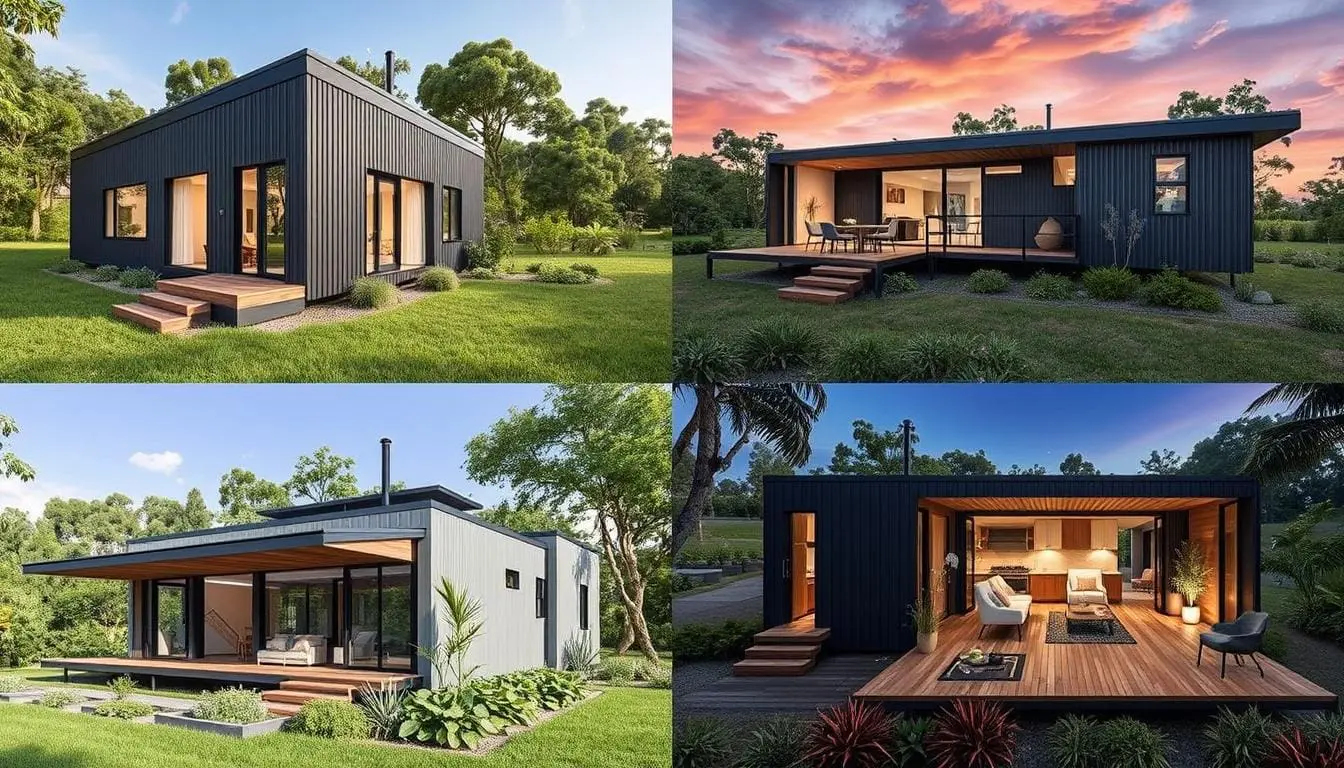
In today’s world, finding affordable and eco-friendly homes is key. Modern prefab homes are changing how we live. They offer a unique mix of affordability, style, and green living.
Looking for more insights? Visit our detailed guide on Modern Prefab Houses to explore stylish, affordable, and sustainable options.
Key Takeaways:
- Modern prefab homes offer a blend of affordability, style, and eco-friendliness.
- Prefab homes are built in factories and then moved to your site. This saves time and money.
- They use resources better, cutting down on waste and energy use.
- Big names like SAMAN Portable, SAMAN Prefab, and Method Homes make sustainable, smart homes.
- Prefab home prices vary from $170,000 to $600 per square foot, based on what you choose.
Understanding Modern Prefab Homes: The Future of Housing
Modern prefab homes are changing the housing market. They are built off-site in controlled environments. This makes them precise, efficient, and cost-effective compared to traditional homes.
From simple designs, prefab homes have evolved. Now, they offer stylish and customizable options for many lifestyles.
What Makes Prefab Homes Different
Prefab homes stand out because of their manufacturing process. They are built in factories, not on-site. This ensures quality and consistency.
Off-site construction reduces waste and improves insulation. It also makes building faster, appealing to homeowners and developers.
Evolution of Prefabricated Housing
Prefab housing has evolved from basic designs. Today, homes range from modern to rustic. Companies like Enercept use advanced materials for better insulation and comfort.
Key Components of Modern Prefab Construction
Modern prefab homes include energy-efficient windows and smart systems. They also use structural insulated panels (SIPs) for better insulation. These features improve their look and performance.
By using new technologies and eco-friendly materials, prefab homes are leading the way. They promise sustainable, affordable, and comfortable living.

The Cost-Effectiveness of Prefabricated Housing Solutions
Prefabricated homes are now a cost-effective choice compared to traditional houses. They offer savings for both buyers and developers.
In India, building a house the old way costs between ₹1,500 to ₹2,500 per square foot. Prefab homes, however, can be built for ₹700 to ₹1,500 per square foot. This means homeowners could save up to 50%.
Prefab homes are also built much faster than traditional houses. While old methods take over a year, prefab homes can be ready in weeks. This quick build time means lower costs for financing and faster returns for developers.
Brands like Pronto offer luxury prefab homes. These homes are stylish, affordable, and built with sustainable materials. They are a great alternative to traditional houses.
As more people learn about prefab homes, demand is growing. This makes affordable portable office options and cheap prefab homes a popular choice for many.

- They use less material and resources in factories.
- Standardized manufacturing means lower material costs.
- They need less labor on-site, saving on construction costs.
- They also cost less to maintain because they are durable and energy-efficient.
As prefab construction gets better, these homes will become even more appealing. They offer quality, affordability, and sustainability for homebuyers.
Sustainable Features and Environmental Benefits
Modern prefab homes are leaders in sustainability. They often meet or exceed top energy efficiency standards like LEED Platinum and Passive House. These homes use innovative features to lessen their environmental footprint.
Energy Efficiency Standards
Prefab homes focus on energy efficiency. They use advanced insulation, energy-saving appliances, and solar panels. This cuts down energy use and lowers utility bills, helping homeowners live more sustainably.
Eco-Friendly Materials Used
Prefab construction favors eco-friendly materials. Think bamboo flooring, low-VOC paints, and recycled steel. These materials boost the homes’ looks and cut down on carbon emissions during production.
Waste Reduction in Manufacturing
The factory setting of prefab homes means less waste. Precise material use cuts down on waste compared to traditional building. This eco-friendly approach saves the environment and keeps costs low, making prefab homes more affordable for businesses.
Modern prefab homes are setting a green example. They offer businesses and individuals a chance to live in harmony with nature. This is a big step towards a greener future.

Design Flexibility and Customization Options
Prefab homes let homeowners customize their living spaces to fit their style. Buyers can choose everything from floor plans to finishes. Companies like SAMAN Portable with factories to create unique, high-end homes. These homes have modern designs and fine finishes, all while being built efficiently.
The Design Series by SAMAN Prefab offers design choices with custom options. This lets homeowners make their prefab homes truly their own. These designs are available quickly and at a good price, with premium options for more flexibility and peace of mind.
Connect Homes also makes high-quality, fast housing for supportive projects and multi-unit communities. They focus on being energy-efficient, cost-effective, and sustainable. This means they offer office portable cabins and customizable prefab homes for various needs and budgets.

SAMAN Portable uses the latest building tech and materials. This ensures their prefab homes are not only customizable but also energy-efficient and eco-friendly. Whether you need a modern family home, a cozy ADU, or a commercial space, prefab construction lets you create a space that matches your vision and lifestyle.
Modern Prefab Homes: Leading Manufacturers and Models
In India, prefab home makers are meeting the need for affordable, green, and custom homes. They are changing how we build houses with modern prefab homes made just for us.
Top Manufacturers in India
SAMAN Portable is a top name in India for prefab homes. They offer everything from commercial buildings to luxury villas. Their homes are flexible and affordable, starting at Rs 800 per square foot.
Connect Homes is known for its prefab solutions. They have homes with open layouts, save energy, and let you customize them.
Popular Design Collections
- GO Home by GO Logic, offering ultra-high energy efficiency and modern aesthetics in a range of 600 to 2,300 square feet designs.
- Axiom 2340 by Turkel Design, featuring three bedrooms, three bathrooms, and an open-plan kitchen-dining area.
- P.A.T.H. Series by Starck with Riko, showcasing stylish prefab houses designed by renowned architect Philippe Starck.
- Breezehouse by BluHomes, with light-filled living spaces, up to four bedrooms, and generous outdoor deck areas.
Price Ranges and Features
Modern prefab homes in India vary in price. They range from affordable to luxury. Many homes are designed to save energy and water. You can also find portable cabins for offices and toilets.

The Construction Timeline Advantage
Time is crucial in homebuilding. Luckily, prefab homes offer a big advantage. The National Association of Home Builders says modular homes can be built in about three months. This is much faster than traditional building.
The reason for this speed is the way prefab homes are built. They are made in a factory while the site is prepared. This means construction can keep going, no matter the weather. It saves time, cuts down on labor costs, and avoids delays.
- Prefabricated homes can be built up to 50% faster than traditional homes.
- Factory-controlled manufacturing makes the building process more efficient and organized.
- Building off-site while preparing the site eliminates weather-related delays.
- Less labor is needed because of the quick construction process.
The efficient building process of prefab homes is a big change. It lets homeowners move in much sooner than with traditional methods. This not only saves time but also lowers the cost of temporary housing and other delays.

Smart Technology Integration in Prefab Homes
Modern prefab homes are becoming more popular. They are not only affordable and good for the environment. They also come with advanced automation systems that make living better.
Home Automation Systems
Companies like Dvele are leading the way with smart home systems. Their DveleIQ system offers control over climate, lighting, security, and energy. This makes homes more comfortable, efficient, and safe.
Energy Management Solutions
Modern prefab homes also have smart energy management systems. These systems help reduce energy use and lower bills. They include solar panels, energy-saving appliances, and insights on energy use.
The use of smart technology in modern prefab homes shows the industry’s focus on innovation and sustainability. These homes combine automation and energy management for a better, greener lifestyle.

Modular Container Offices: A Commercial Solution
In today’s fast-paced business world, modular container offices are becoming a smart choice. They are made from shipping containers and offer both function and style. This makes them perfect for businesses of all sizes.
These offices are a new way to think about workspaces. They can be set up quickly, moved easily, and grow with your business. You can customize them to fit your needs, from small offices to big complexes.
One big plus of modular container offices is how affordable they are. They save money because they’re built in a factory, not on-site. Plus, they often have green features, which is great for eco-conscious companies.
These offices also look good. Designers have turned them into modern and stylish workspaces. They have sleek looks and smart layouts, making them a cool alternative to regular offices.

If you’re starting a new business or need a flexible office, modular container offices are a great choice. They can change with your business needs. This makes them a key part of the future of workspaces.
Quality Standards and Building Regulations
The need for strong and dependable portable cabins is growing. It’s important that these prefabricated homes follow strict quality standards and building rules. In many places, prefab homes must meet or go beyond the same tough codes as regular houses. This makes sure they are as safe, durable, and energy-efficient as traditional houses.
Certification Requirements
Prefab homes go through a detailed certification process. They are checked for energy efficiency, how well they stand up, and their impact on the environment. These certifications confirm that prefab homes meet or beat safety and green standards.
Safety Standards
- Fire resistance: Prefab homes are made to be very fire-resistant. They use materials and designs that keep people safe.
- Earthquake resilience: In areas where earthquakes happen, prefab homes are built to handle these forces. This keeps the building strong.
- Wind load capacity: Prefab homes are made to handle strong winds. This protects the structure and people inside from the weather.
Following these strict safety standards shows prefab homes’ dedication to safety and reliability. They offer a secure and dependable place to live, just like regular houses.

Strong quality control and following building rules are key for prefab homes. They prove to be a solid and trustworthy choice compared to traditional building. These steps help prefab homes meet the changing needs of homeowners and businesses.
Portable Cabin Solutions for Various Applications
In today’s fast-paced world, portable cabins are becoming more popular. They are useful for businesses, groups, and individuals. These structures can be used for many things, like temporary offices or emergency shelters.
Toilet porta cabin and office portable cabin solutions are also cost-effective. They are cheaper than building from scratch but still high in quality and durability. These units can be shipped and set up fast, saving time and effort.
- Portable cabins are a budget-friendly choice for art studios, pop-up shops, and remote learning spots. They save money upfront and use less energy.
- In emergencies, they can quickly become shelters. This helps meet the need for temporary homes or medical areas.
- They are easy to move, making it simple for businesses to set up in the best spots. This is great for cafes and food stands.
- Construction sites can use portable cabins as offices. They help with communication and protect important things.
India’s leading portable cabin maker, SAMAN Portable, is at the forefront. They offer top-notch, customizable options for many uses. Their structures are made from high-quality steel, lasting long with little upkeep.
Portable cabins also have big benefits for the environment. They use green materials and can be recycled or reused. This helps lower carbon emissions.
Portable cabins are flexible and can change to fit different needs. As the need for flexible and affordable spaces grows, portable cabins will play a big role in the future of buildings.
Financing Options and Investment Potential
Investing in affordable prefab homes is a great chance for homebuyers in India. Financing might not be like traditional mortgages. But, lenders are now offering loans made just for prefab homes.
Mortgage Considerations
Some lenders have special mortgage products for prefab homes. They consider the quick construction and controlled factory environment. These loans might need only a 10% down payment, helping first-time buyers or those with little savings.
Return on Investment Analysis
Prefab homes are a smart investment, thanks to their energy efficiency and low maintenance. The return on investment can be good, especially in areas with high demand. But, think about land costs and how much the area might appreciate.
Prefab homes save money because of less labor and material costs. The quick, controlled factory process means big savings. This can make prefab homes a wise investment for homeowners.
Understanding financing and the investment potential of prefab homes can help Indian homebuyers. With the right financing and looking at long-term savings, prefab homes can be a smart choice.
Site Preparation and Installation Process
Building a prefab home needs careful site preparation and a smooth installation. This step is key for the home’s strength and long life. Let’s look at what’s involved in getting the site ready and setting up your prefab home.
First, it’s important to check the land’s shape, soil, and local building rules. This helps with site prep and setting up utilities like water, electricity, and sewage. It’s also important to think about the environment, like protecting wetlands and wildlife.
- Use erosion control to protect the prefab home.
- Plan for tree removal and landscaping for a nice living space.
- Check the property lines with a surveyor to avoid problems later.
It’s important to have a clear path for the prefab home’s delivery and setup. This means clearing the site of debris and setting up a place for construction tools and materials. This makes the site preparation and installation go smoothly.
Timing and working with the prefab home maker are key. Know when the home will arrive and make sure the site is ready. Also, watch the weather to prepare the site best.
When the site is ready, the prefab home modules are brought in and put together. This is usually quicker than building from scratch, taking just weeks. But, it needs teamwork between the maker, site crew, and local officials for a smooth setup.
After the home is set up, a detailed site check is done. This includes fixing any issues and planning for landscaping and outdoor areas. Making sure utilities work right is also important for a good prefab home. Keeping the home in good shape and managing the site well helps it last longer and is better for the environment.
Maintenance and Longevity Considerations
Understanding the maintenance needs of durable and reliable portable cabins or prefab homes is key. These homes are built to last, thanks to the controlled factory environment. This environment allows for precise construction and the use of top-quality materials.
Temporary modular buildings can last about 25-30 years in tough climates. With proper care and updates, prefab structures can last a lifetime. The quality of installation and materials also plays a big role in their longevity. Modular buildings with permanent foundations tend to last longer than temporary ones.
- Quality materials and construction techniques protect prefab buildings from time, weather, and seismic activity.
- The expertise of the company installing the prefab home is crucial for ensuring its durability.
- Maintenance and proper installation play critical roles in the longevity of prefab homes.
Prefabricated homes must meet strict building codes and permits for safety and reliability. With the right builder and maintenance, these homes can be a smart investment. Some prefab structures can last 50 years or even longer.
Regular upkeep and maintenance are vital for extending prefab building life. This includes checking seams, maintaining exterior finishes, and servicing systems. New technologies have also improved prefab structures with better insulation and features.
The long life of prefab homes shows their innovative design, quality construction, and commitment to sustainability. By understanding maintenance and longevity, homeowners can enjoy comfortable, durable, and eco-friendly living for years.
Comparing Traditional vs. Prefab Construction
Exploring modern prefab homes means looking at how they stack up against traditional building. The main differences often boil down to cost and how fast they’re built.
Cost Analysis
Experts say prefab homes can save you up to 20% on costs. This is because they use less labor and waste in a factory setting.
Time Efficiency
Time is key in building. Traditional methods take 6-16 months, but prefab homes can be done in 6-8 weeks. Prefab can be 50% faster than traditional building.
Prefab homes also have environmental benefits. They have a lower carbon footprint than traditional houses. Plus, prefab homes offer more design freedom, letting you tailor your space to your liking.
Choosing between traditional and prefab homes depends on what matters most to you. Knowing the pros and cons helps you pick the best fit for your needs and budget.
Conclusion
Modern prefab homes are a big step forward in housing tech. They offer a mix of affordability, style, and sustainable living. They tackle big housing market issues like cost, speed, and environmental impact.
As the tech keeps improving, prefab homes will become even more key in solving global affordable housing solutions. They fit well in different climates and lifestyles. Plus, they can be smart homes that save energy.
The prefab building method is faster and better quality. This makes modern prefab homes a great choice for those wanting affordable, green homes. You can make them your own, saving time and materials.
This trend is set to grow, making prefab homes a big deal in the future. They’re changing how we see modern housing.
The growth of modern prefab homes is a big deal in the housing world. It mixes new ideas, cost-effectiveness, and caring for the planet. This could lead to a better, more sustainable living space for everyone.
FAQ
What are the key benefits of modern prefab homes?
Modern prefab homes are affordable, stylish, and eco-friendly. They are built in factories and then shipped for assembly. This makes construction faster and cheaper.
They also use resources wisely, cutting down on waste and energy use.
How do prefab homes differ from traditional construction?
Prefab homes are built in factories, offering precision and efficiency. They’ve evolved from simple designs to stylish, customizable homes. They include features like SIPs, energy-efficient windows, and smart home systems.
What are the cost advantages of prefab homes?
Prefab homes are cheaper than traditional homes. They save on material waste, construction time, and labor costs. But, remember to add costs for site work, transportation, and permits.
How do prefab homes address sustainability?
Prefab homes are very sustainable. They meet high energy efficiency standards and use eco-friendly materials. This reduces waste and makes them environmentally friendly.
What customization options are available for prefab homes?
Prefab homes offer many customization options. You can choose everything from floor plans to finishes. This lets you create a unique, high-end home while keeping the prefab benefits.
What are the leading prefab manufacturers in India?
In India, top prefab makers offer a variety of models. Their designs mix modern looks with traditional Indian touches. Prices vary, from affordable to luxury, with features like climate designs and water saving systems.
How does the construction timeline of prefab homes compare to traditional construction?
Prefab homes are built much faster than traditional homes. Modular homes can be finished in about three months. This is because they’re built in factories, away from weather issues.
What smart home technologies are integrated into prefab homes?
Modern prefab homes come with advanced smart home tech. They have systems for climate control, lighting, security, and energy management. These systems make prefab homes efficient and comfortable.
How do prefab homes meet quality standards and building regulations?
Prefab homes meet strict quality and building codes. They must pass energy efficiency tests, structural checks, and environmental reviews. This ensures prefab homes are as good as traditional ones.
What are the versatile applications of portable cabins?
Portable cabins are great for many uses, like offices, toilets, or homes. They’re perfect for remote areas or construction sites. They come in various sizes and can be moved easily.
How does the financing process differ for prefab homes?
Financing prefab homes is different from traditional mortgages. Some lenders offer special loans for them. They’re a smart investment due to energy savings and lower maintenance. But, consider land costs and location value.
What are the key considerations for the site preparation and installation process?
Site prep and installation are key for prefab homes. It involves clearing land, laying foundations, and setting up utilities. Once ready, the modules are transported and assembled quickly. Proper planning and coordination are vital for a smooth process.
How do prefab homes compare to traditional construction in terms of maintenance and longevity?
Prefab homes are built to last and need little maintenance. The factory setting ensures precise construction, reducing future problems. Still, regular checks are needed. Many prefab homes use materials and designs that last long, making them reliable.
What are the key factors to consider when choosing between prefab and traditional construction?
When choosing between prefab and traditional, consider several factors. Prefab homes are often cheaper and faster. They also offer better quality control. But, think about transportation costs and customization options. The right choice depends on your needs, budget, and location.
 Container Cafe
Container Cafe